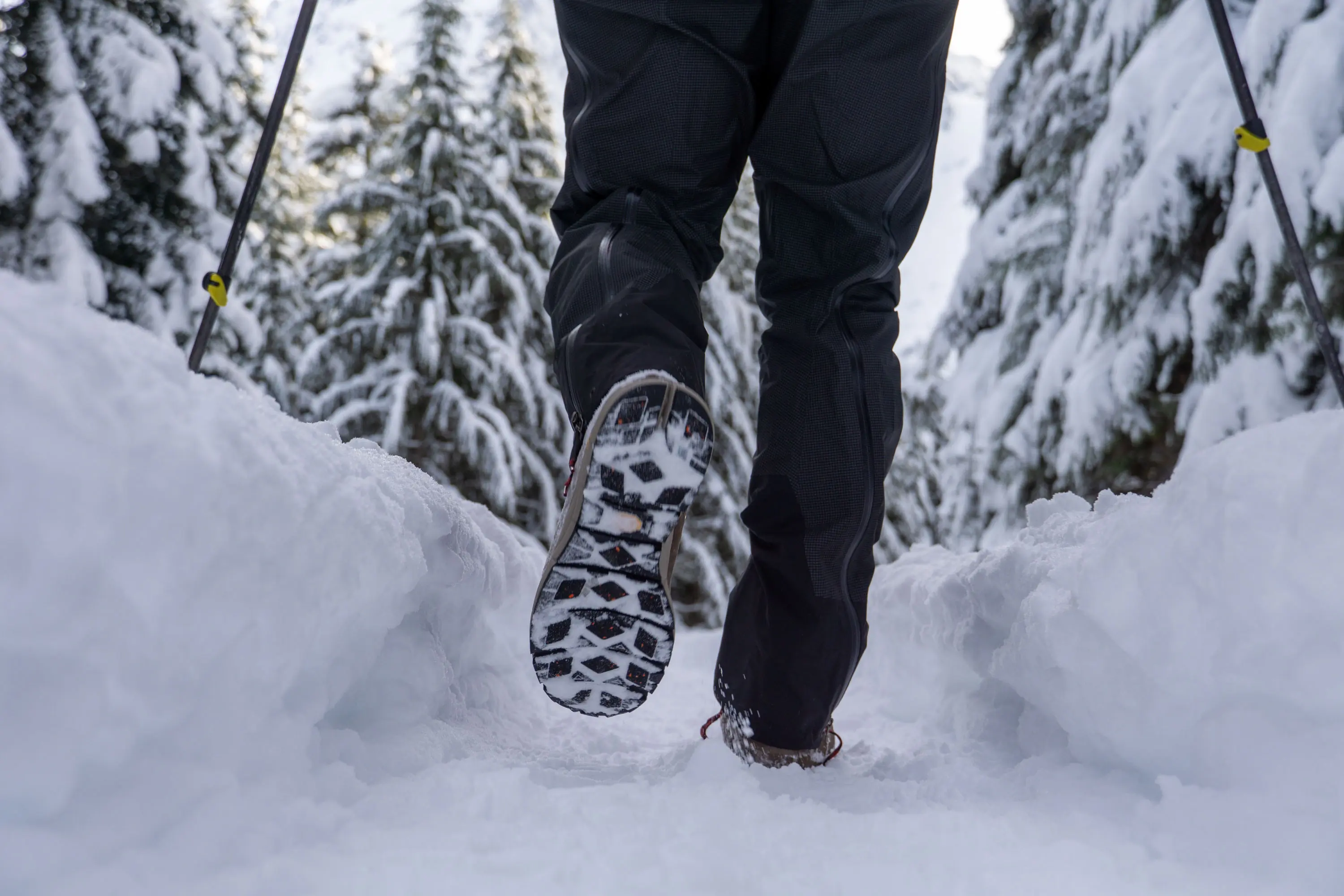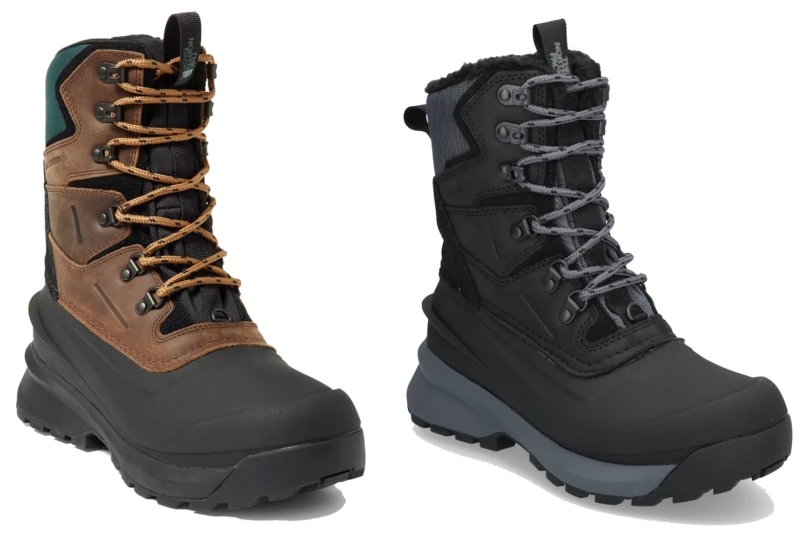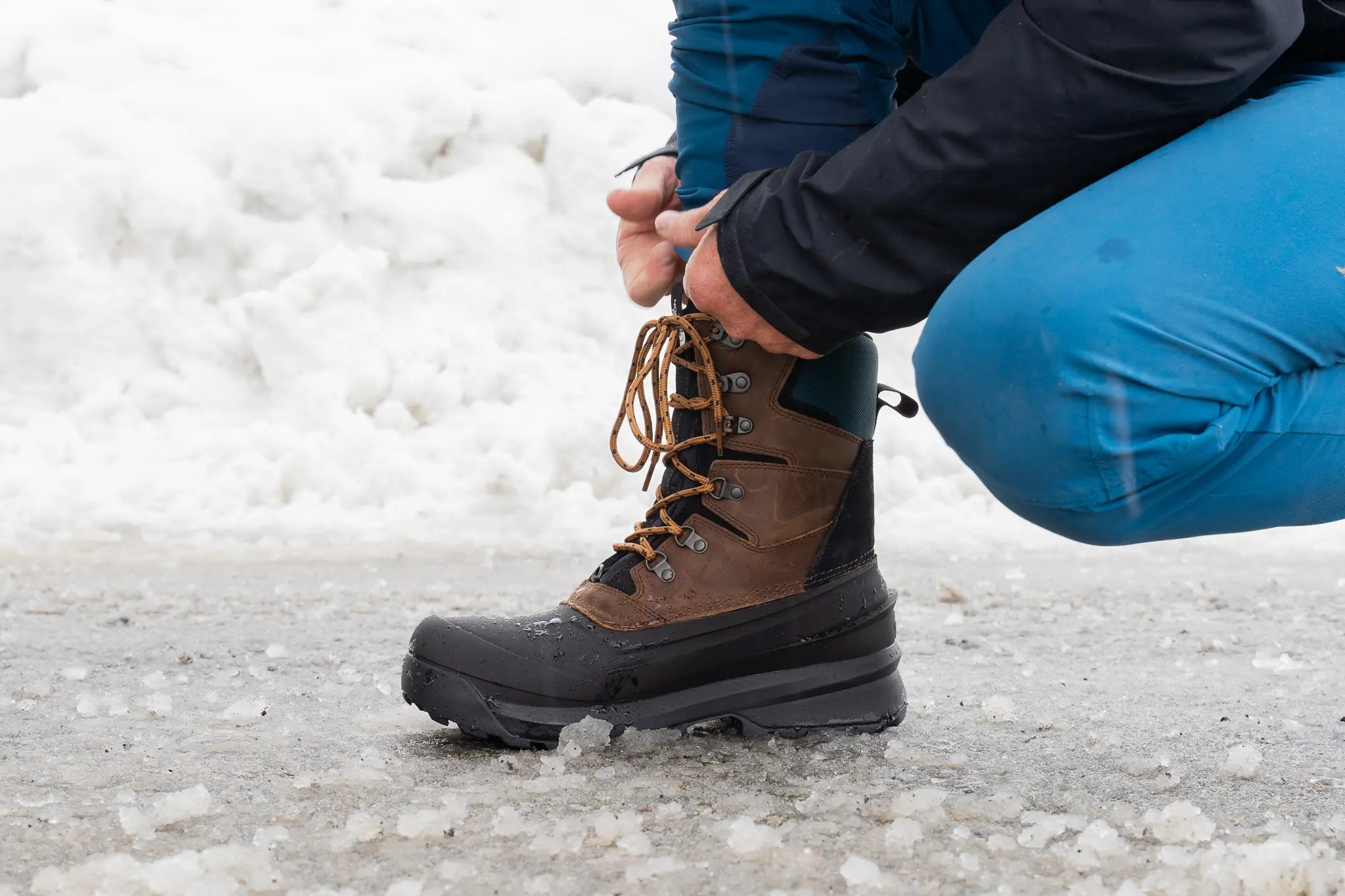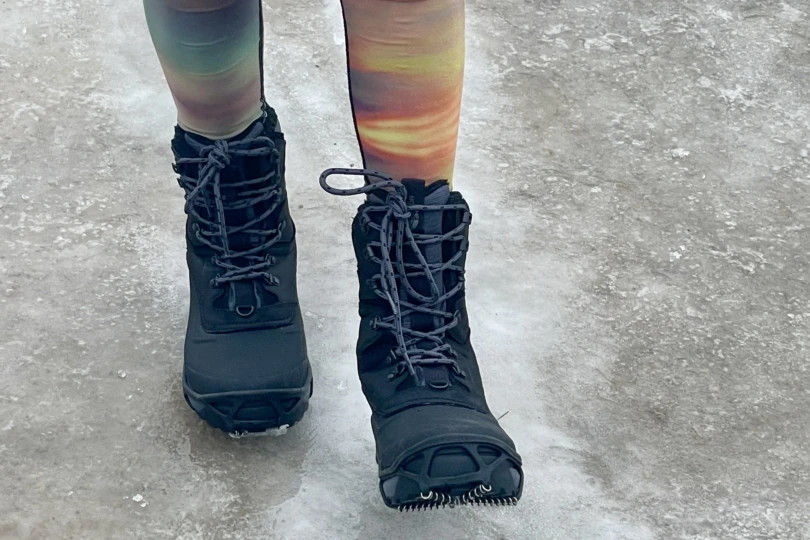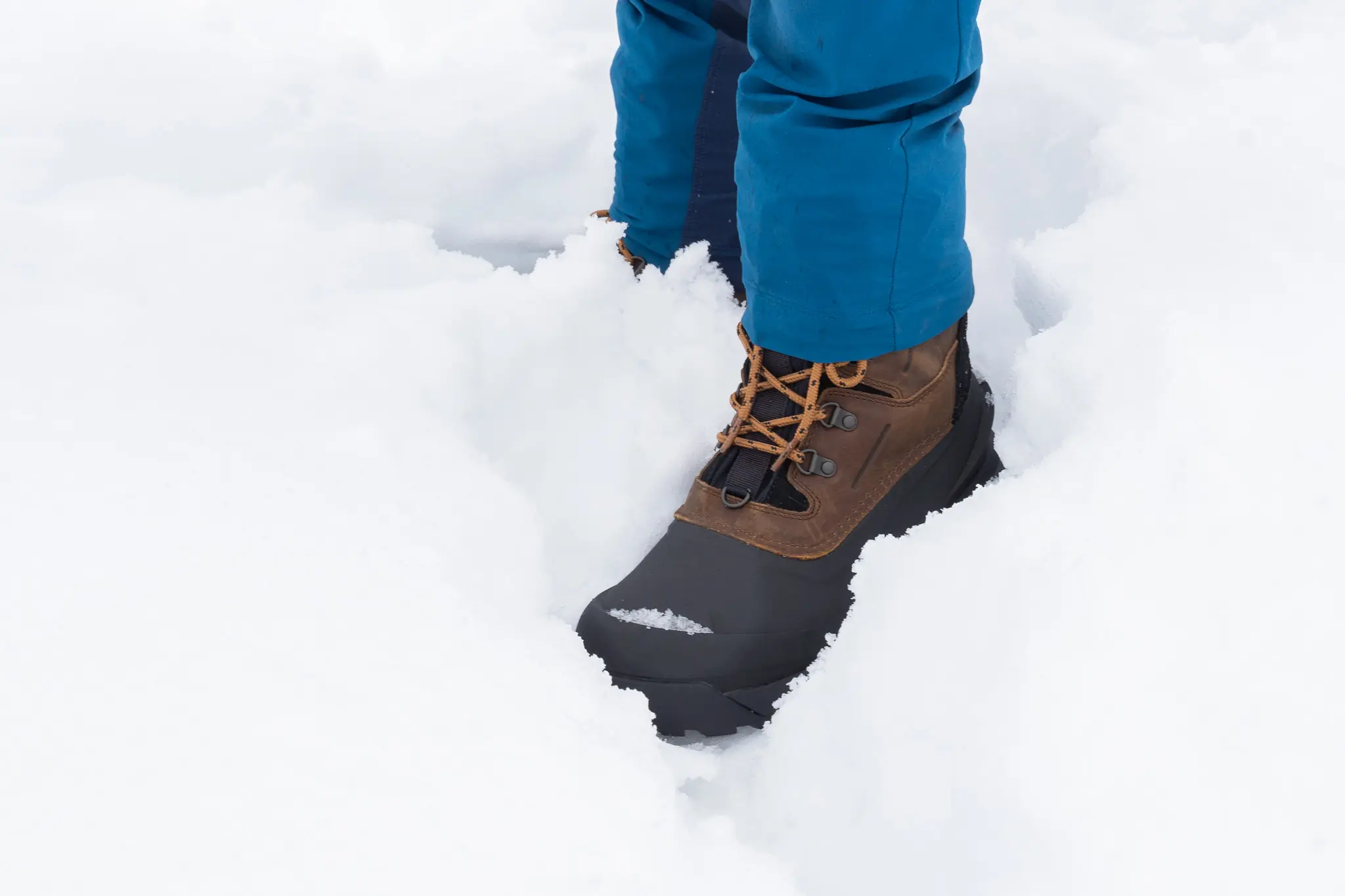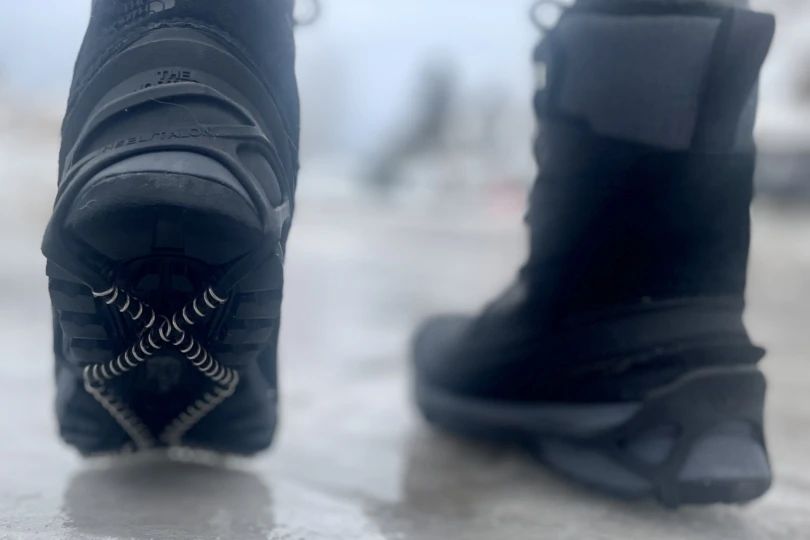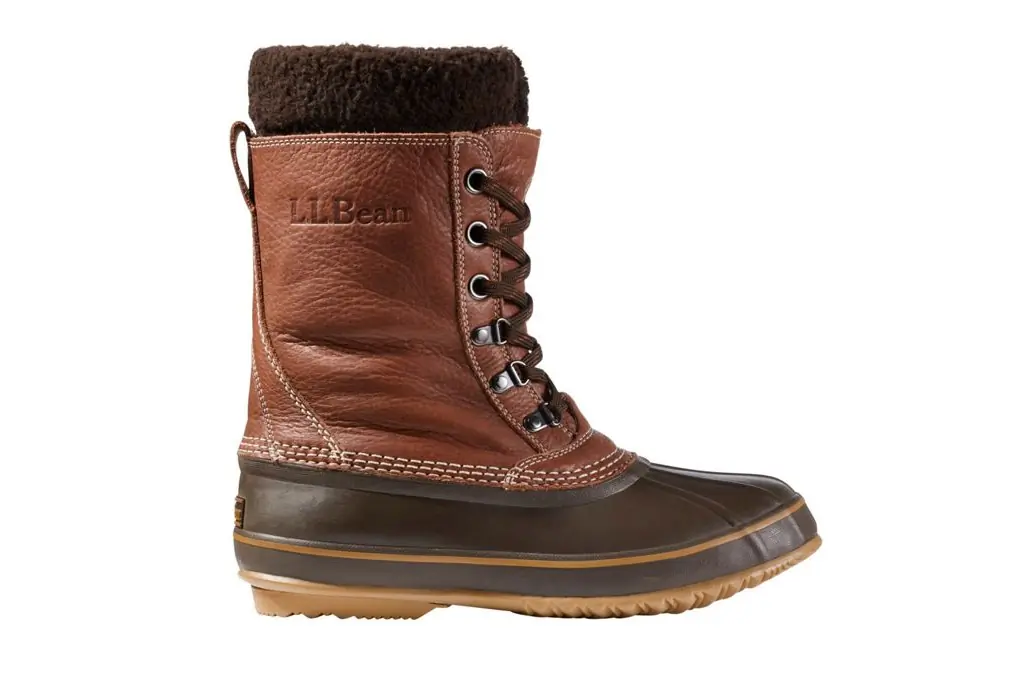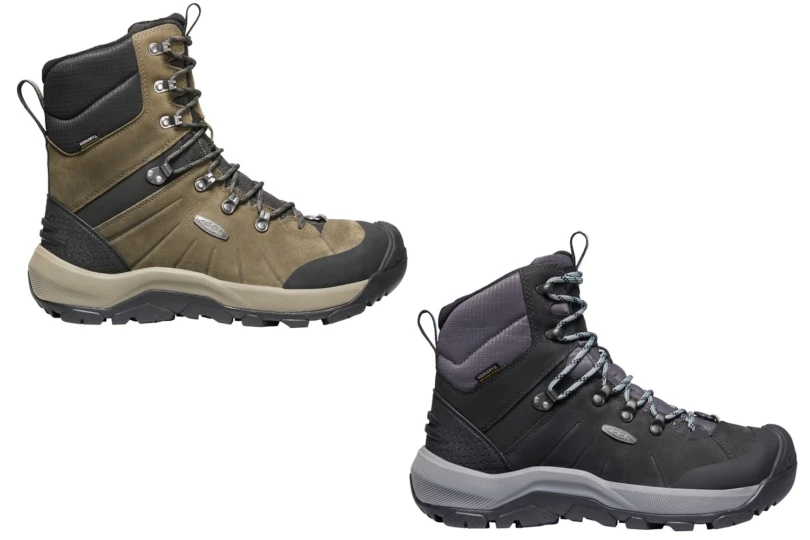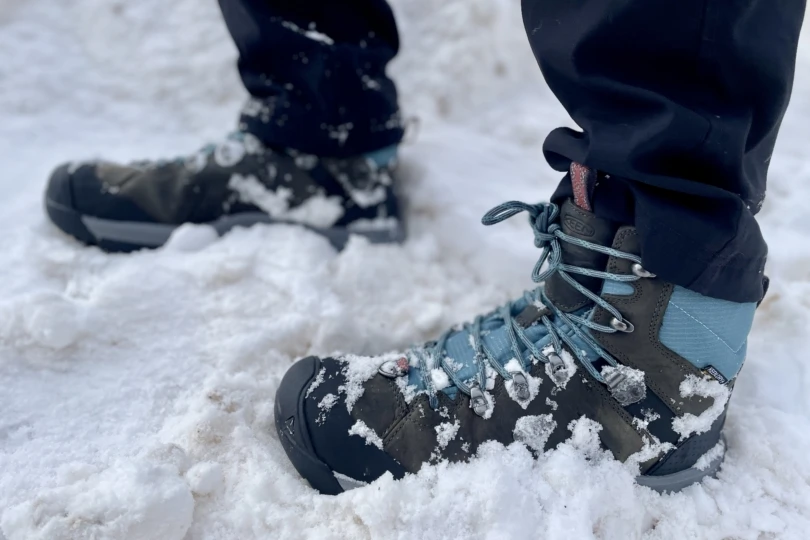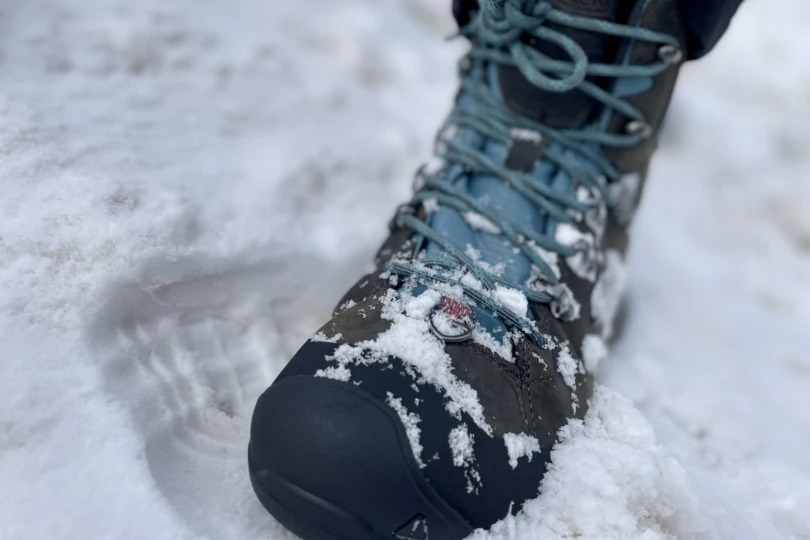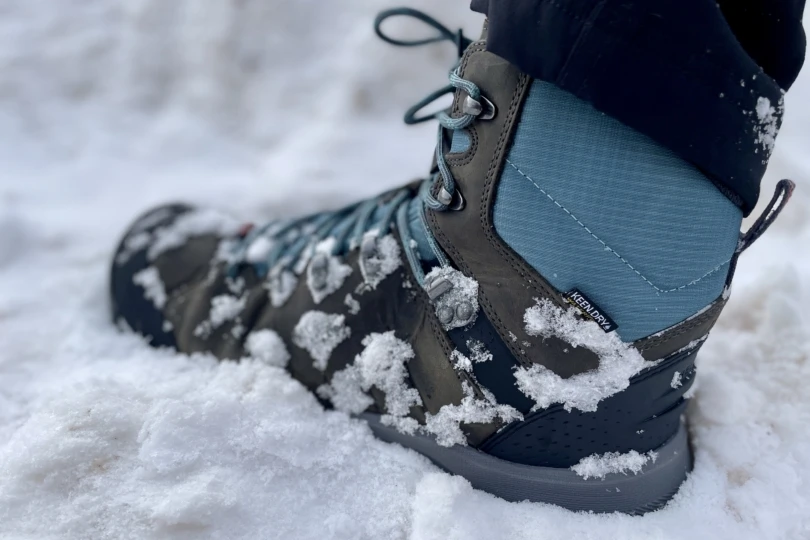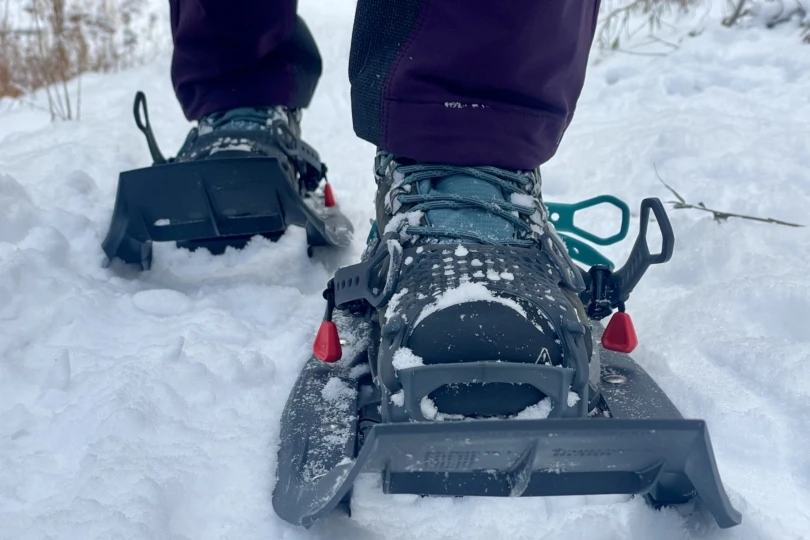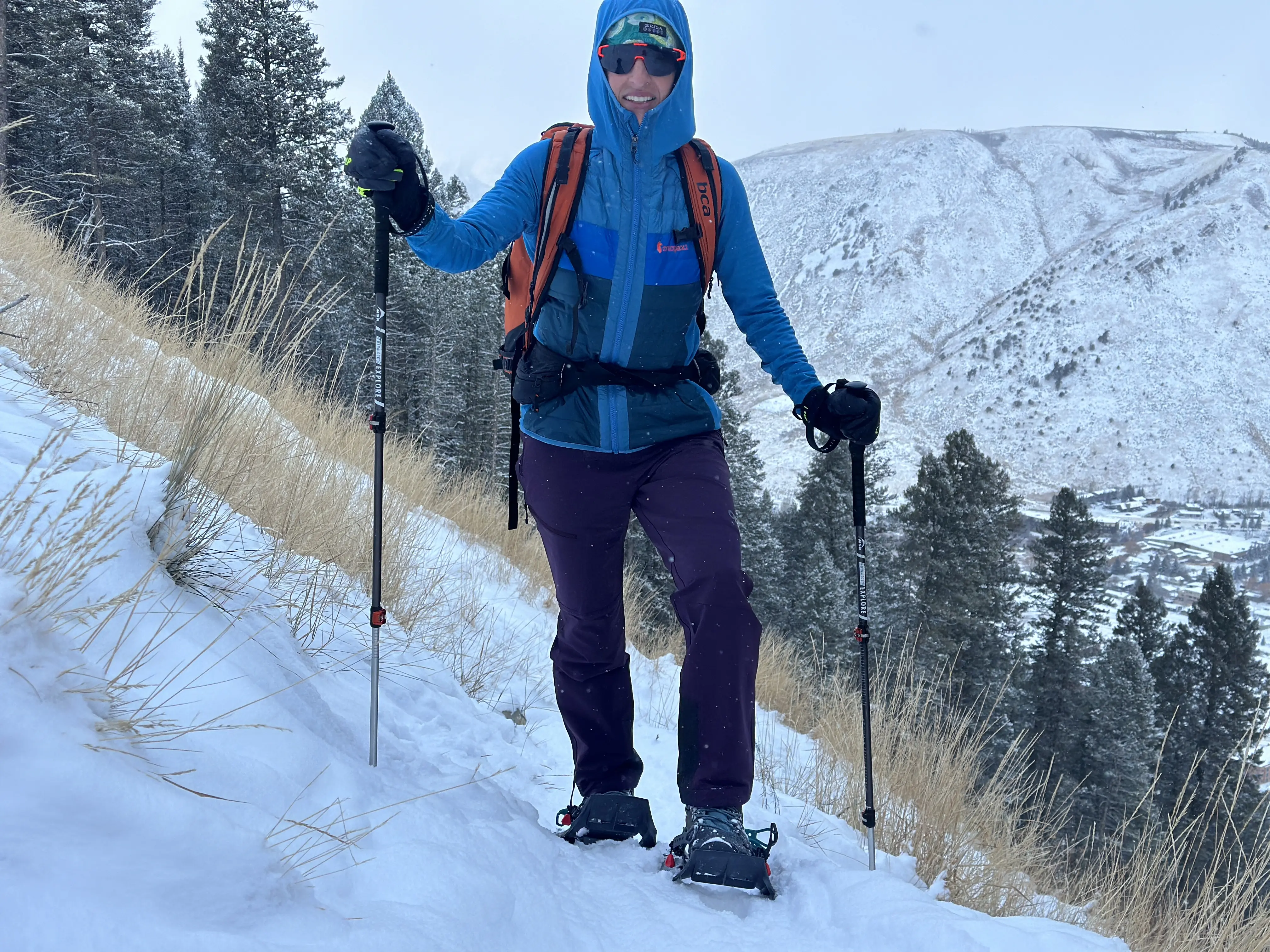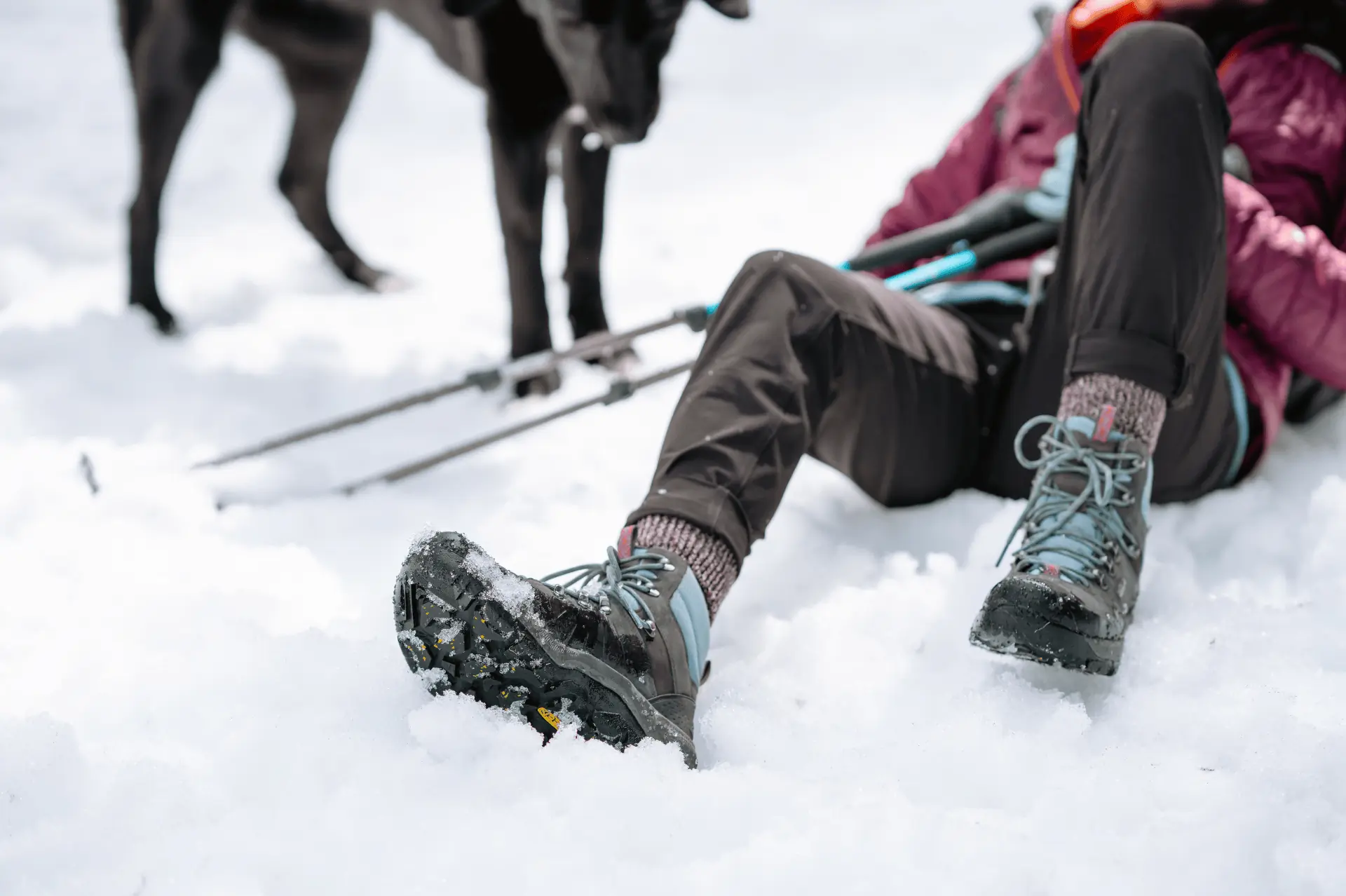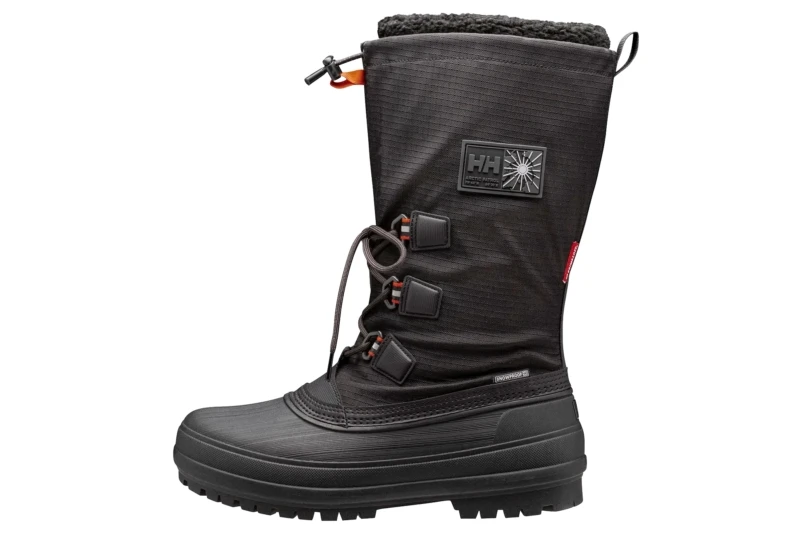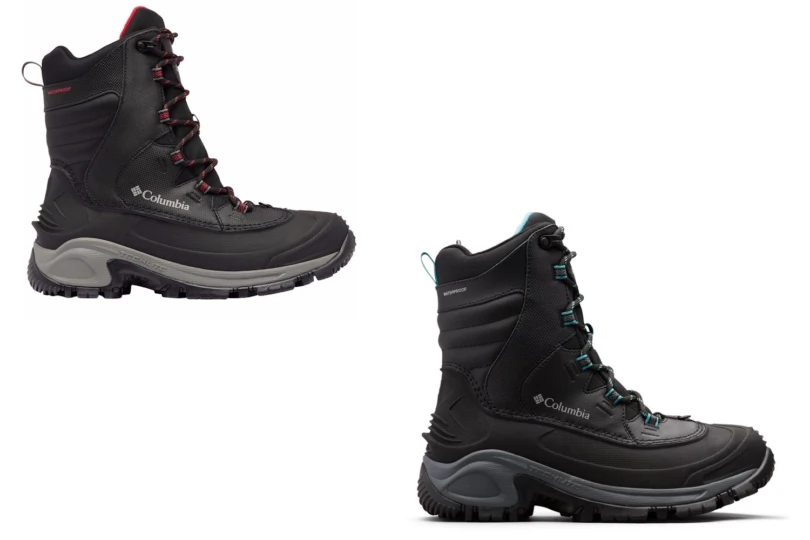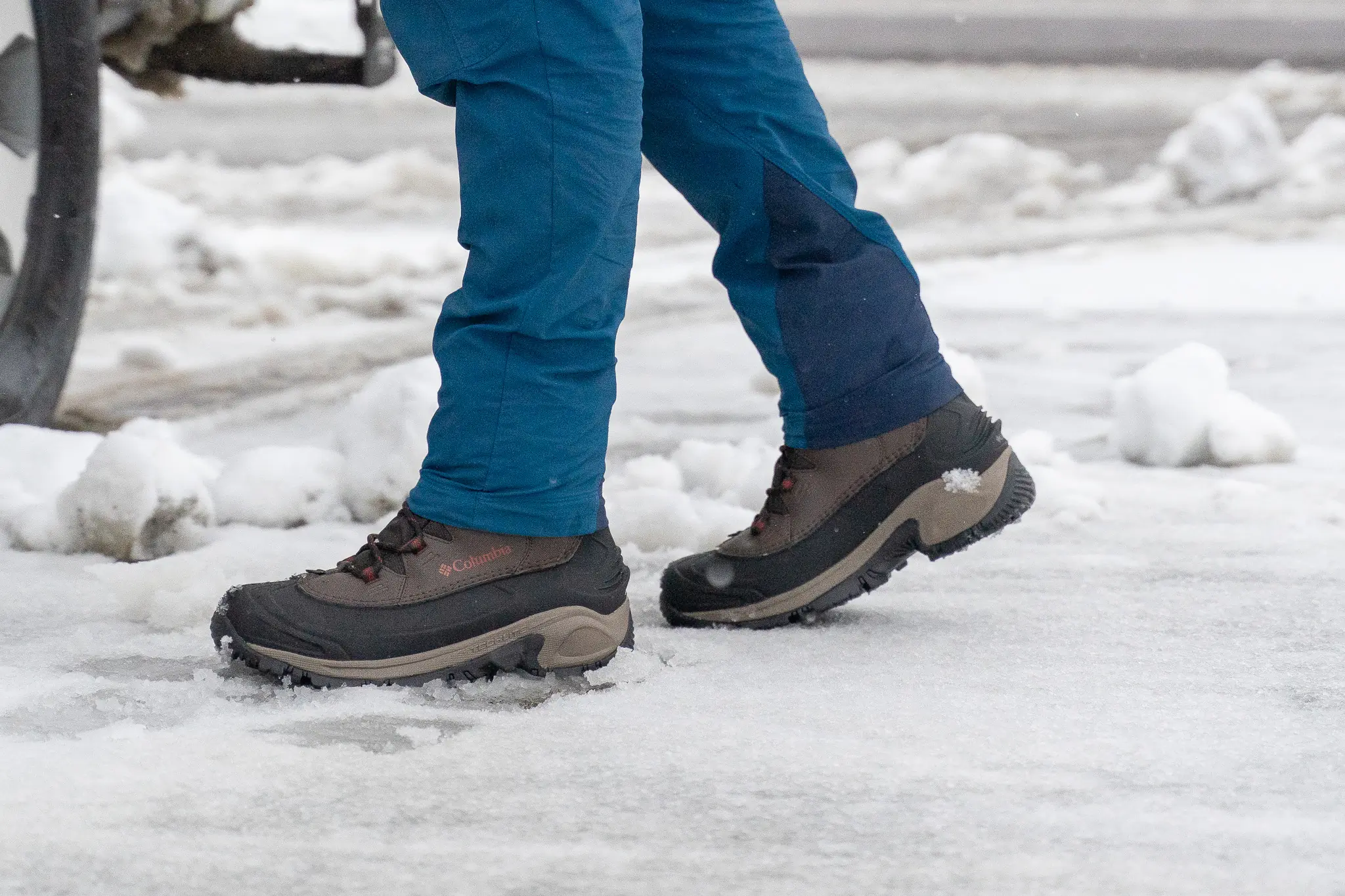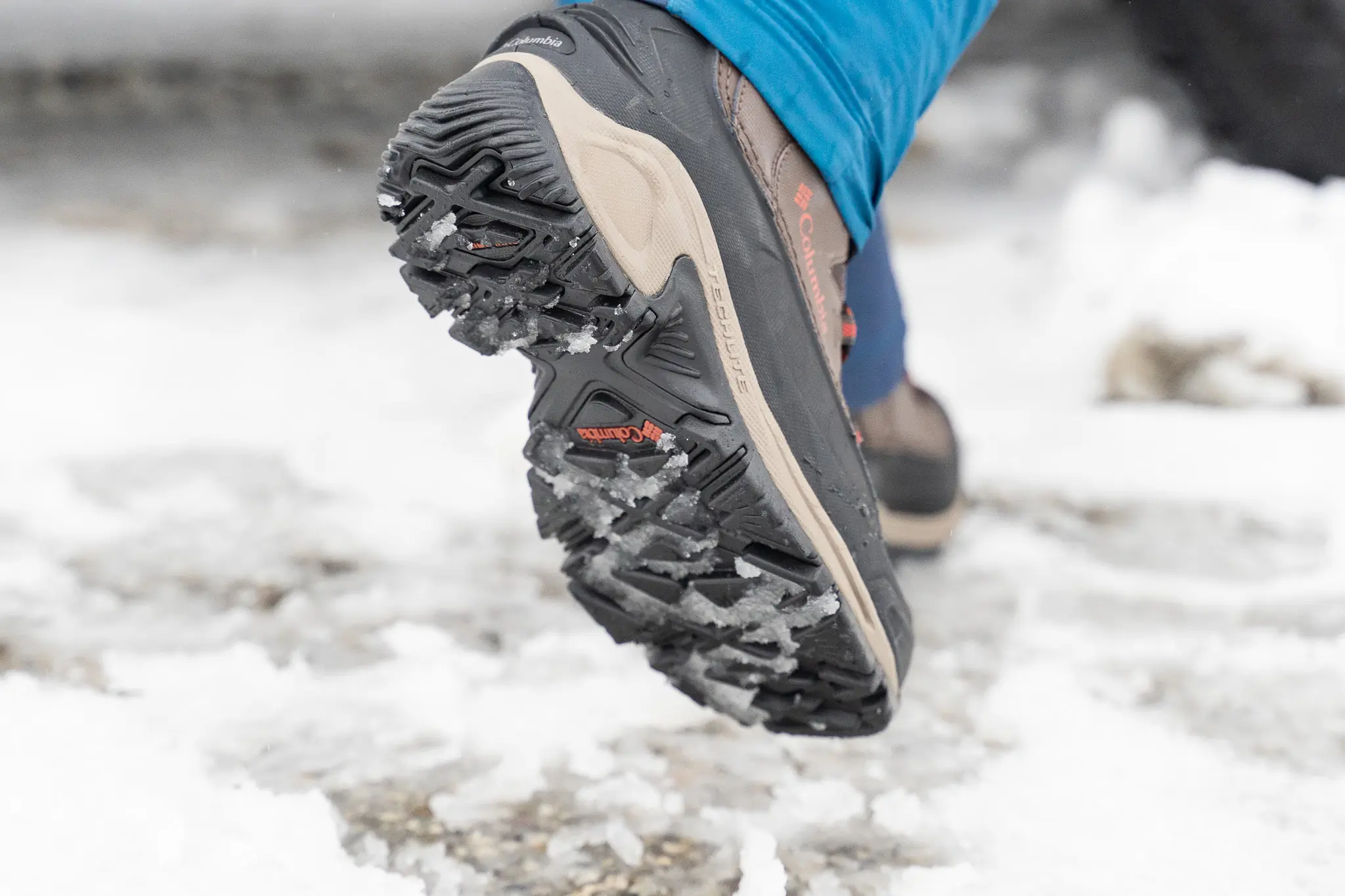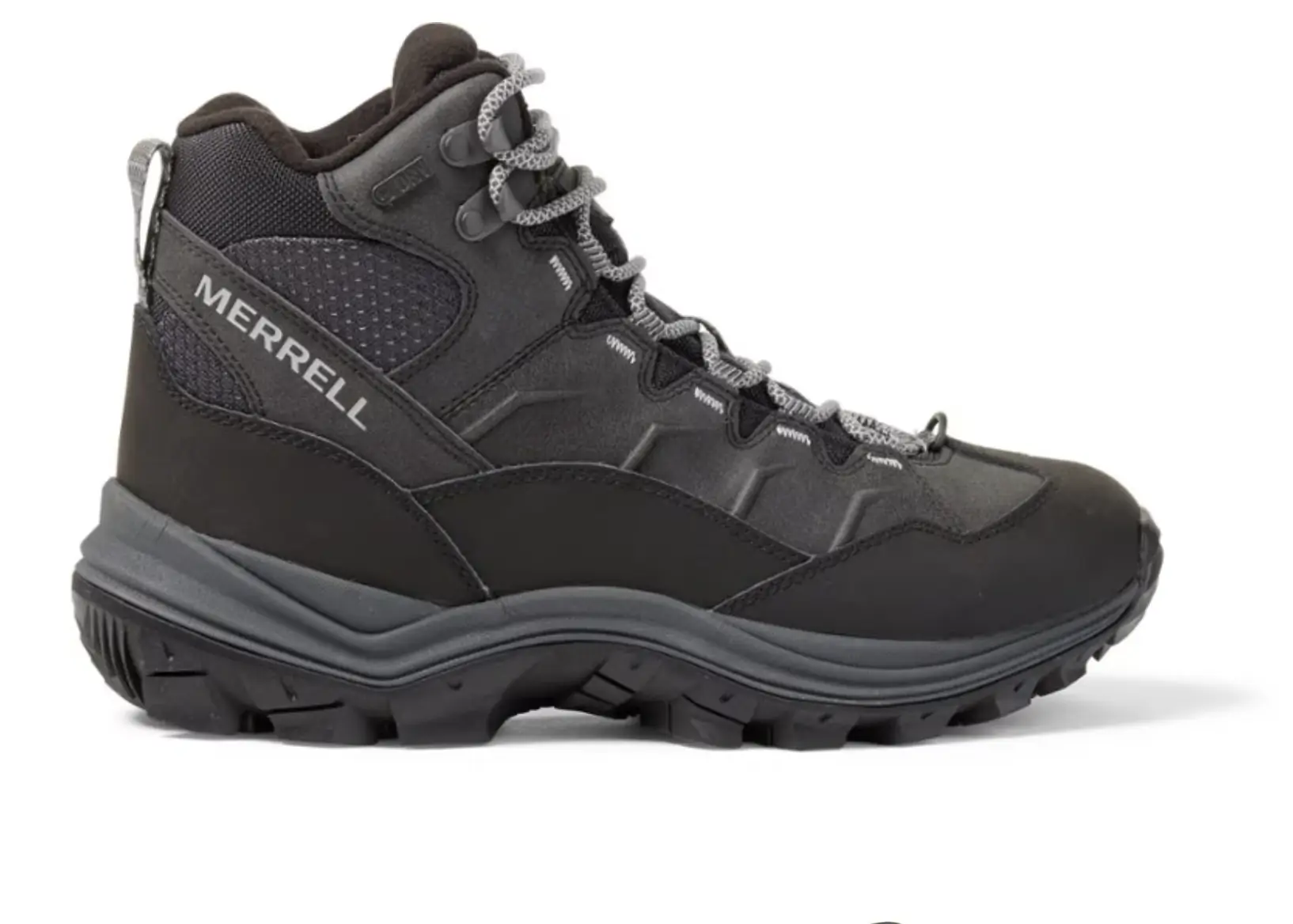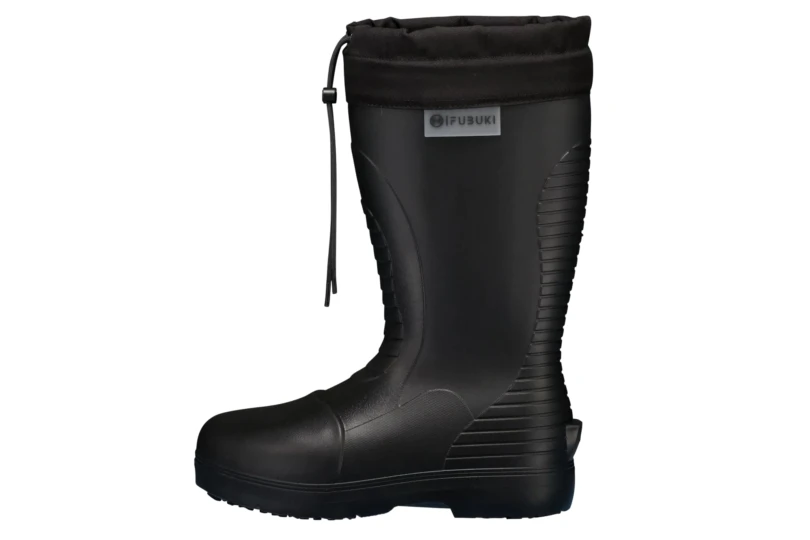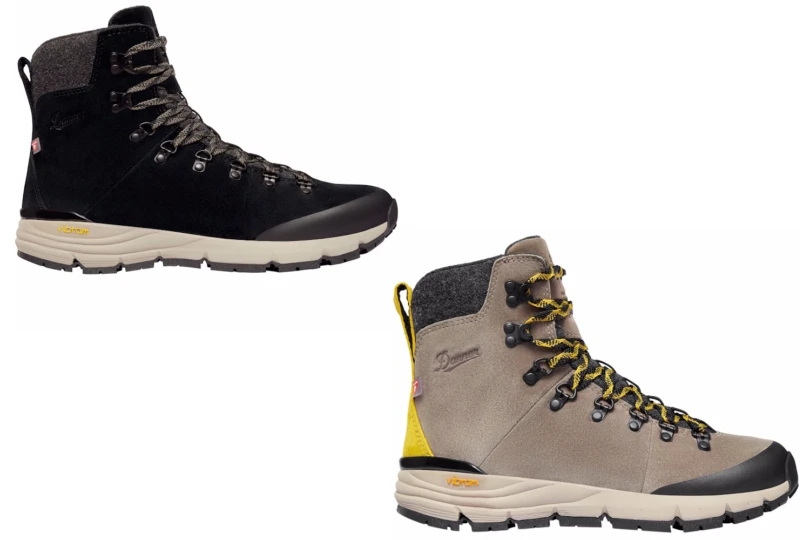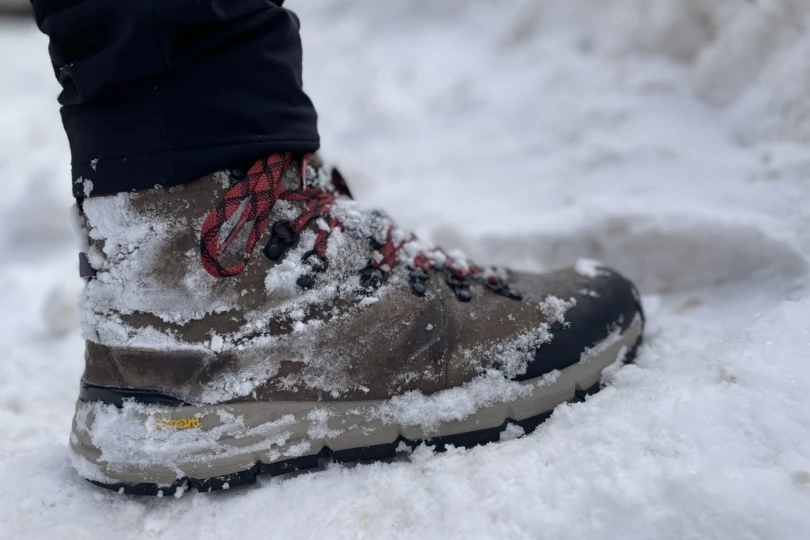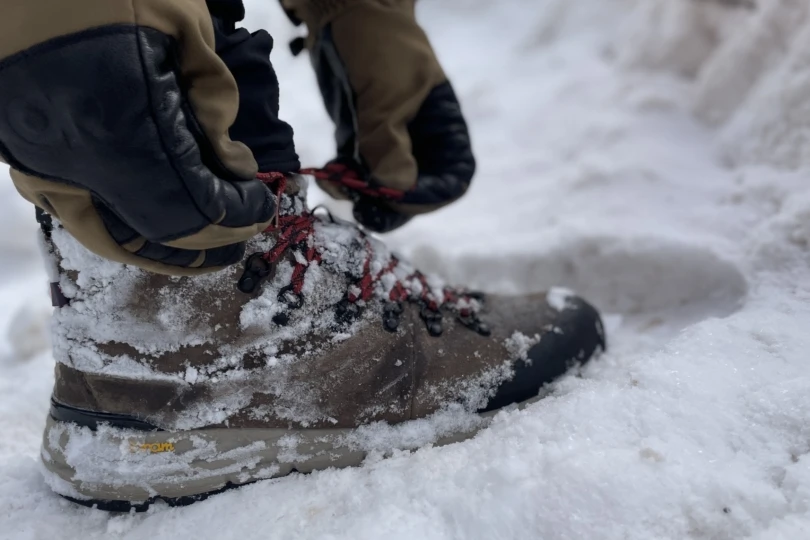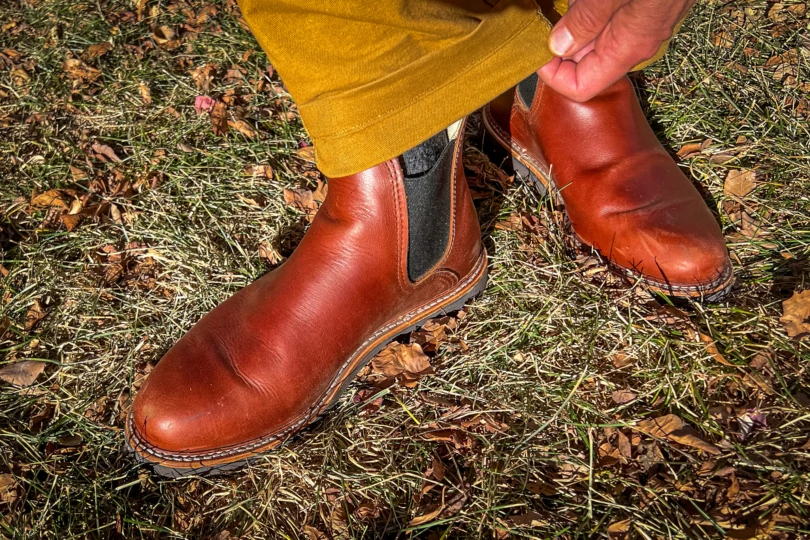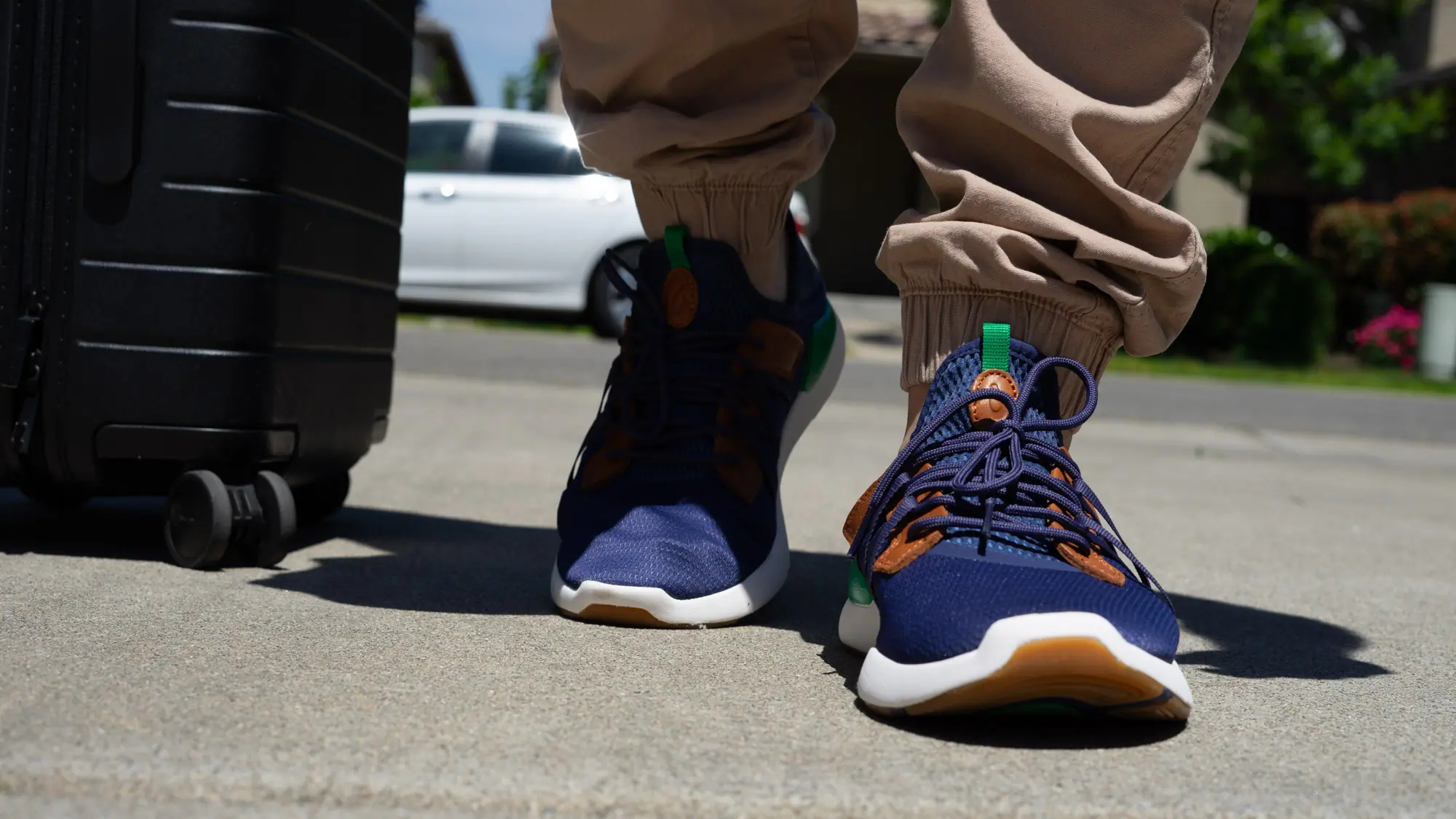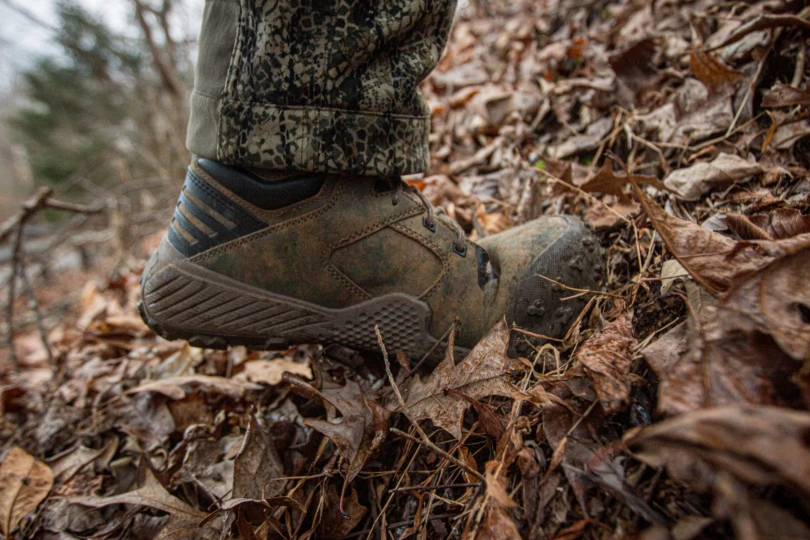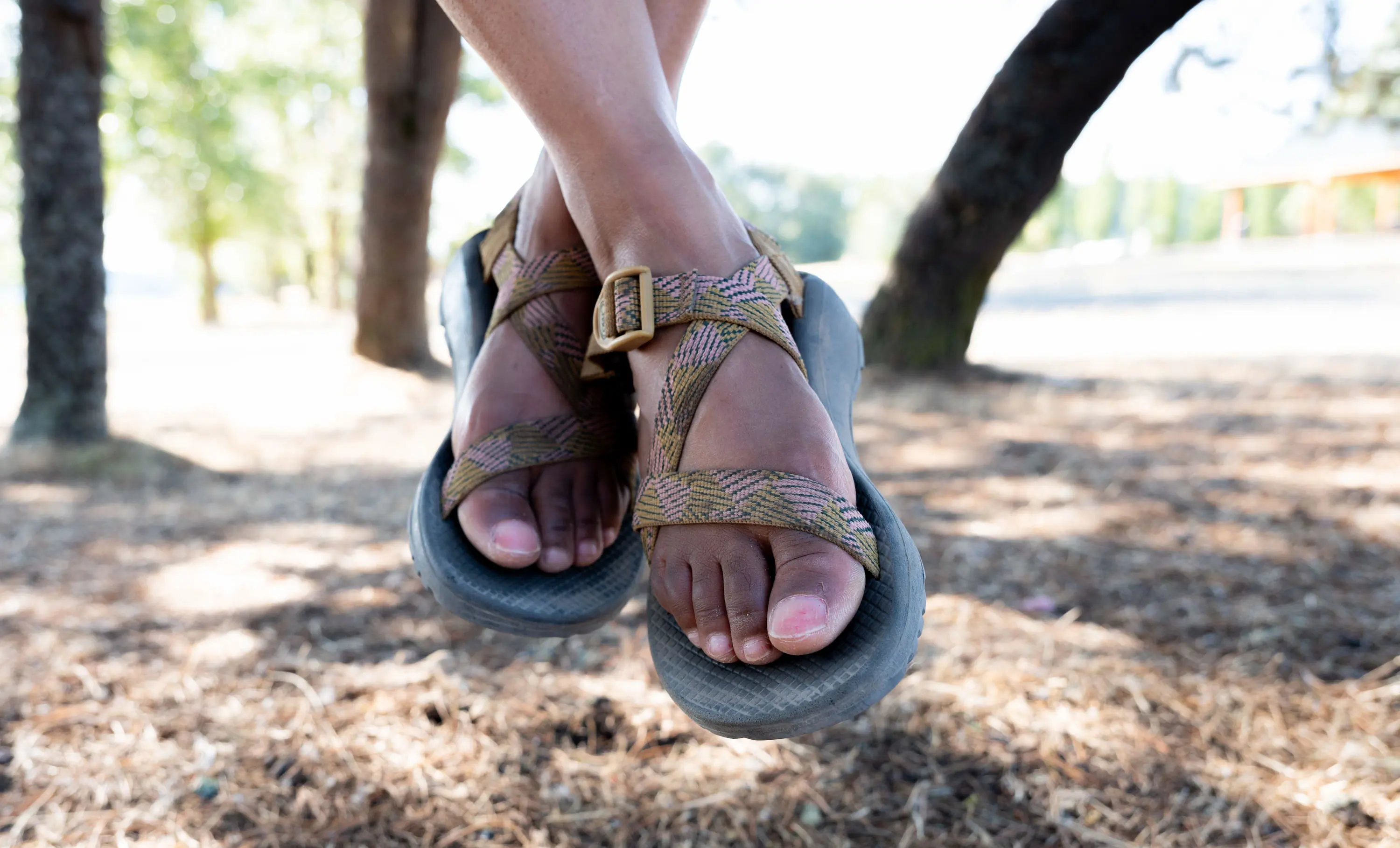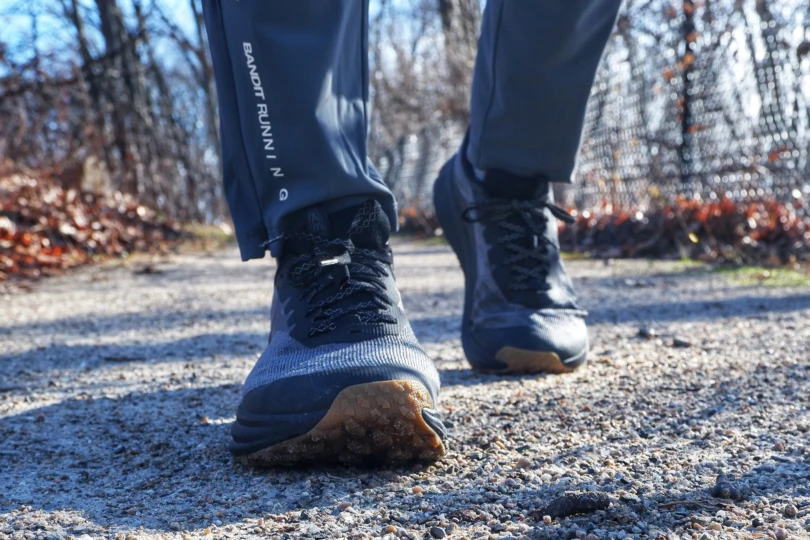To give you a jump start on the season, we’ve kicked the rubber on a lot of soles to find the best winter boots for men. Because winter varies so much around the country — from slush and mud to deep powder — we included a variety of boots from puddle-stomping to hell freezing over.
Our recommendations aren’t given unearned, either. We’ve saddled up in nearly 25 different pairs of winter boots over the seasons, and have worn them everywhere from elk hunts in the high alpine of Colorado to digging out our rigs from Sierra snowmageddons and approaching North Cascade fire lookout towers after the first snowfall. All those miles add up to a pretty good impression of what flies when the mercury plummets.
Throughout it all, we kept tabs on our feet and compared boots based on their warmth, durability, waterproofing, comfort, and style. If you’re looking for a quick recommendation that’ll cover most conditions, look to our top pick, the North Face Chilkat V 400s. Or, if winter passes quickly for you and you just need something that works, the budget Kamik Nation Plus Boots get the job done.
Editor’s Note: We updated our Winter Boot guide on November 12, 2025, to shake up our award winners. We’re particularly excited about the Bogs Bozeman Tall Boots — a stellar winter chore boot — as well as the Helly Hansen Arctic Patrol Boots, which are quite the lookers. We also added detailed product ratings to each boot.
The Best Winter Boots for Men in 2025-2026
The North Face Chilkat V 400
-
Warmth
8.3
-
Weather Protection
9.1
-
Comfort & Fit
9.0
-
Traction
9.0
- Insulation: 400 G Heatseeker Eco Insulation
- Shaft height: 8 in.
- Weight: 3 lbs. 2 oz.
- Waterproofing: Fully waterproof, seam-sealed construction & waterproof internal membranes
- Upper: Full-grain leather and suede
- Best for: Cold-weather hikes, long winter days outside, snowshoeing.
Pros
- Warm and waterproof for most winter conditions
- Comfortable, hiking-boot-like fit with soft lining
- Reliable traction on snow and ice
- Excellent overall performance at an affordable price
Cons
- Some taller boots offer slightly more warmth & protection
Kamik Nation Plus
-
Warmth
8.0
-
Weather Protection
7.0
-
Comfort & Fit
6.0
-
Traction
7.0
- Insulation: HEAT-MX 145 insulation
- Shaft Height: 11.25"
- Weight: 3 lbs., 10 oz. (pair, men's size 10)
- Waterproof: Inner and outer seams sealed
- Upper Material: Suede leather
- Best For: All around winter use, short hikes, shoveling the driveway
Pros
- Reliable traction on ice and snow
- Warm and cozy removable liner
- Affordable
Cons
- Heavy and clunky
- Not the most casual boot for city use
L.L.Bean Leather Snow Boots
-
Warmth
7.0
-
Weather Protection
7.0
-
Comfort & Fit
7.0
-
Traction
6.0
- Insulation: Faux fleece and felt liner
- Shaft Height: 11"
- Weight: 4 lbs., 5.2 oz. (pair, men's size 10)
- Waterproof: Only up to lower rubber shell
- Upper material: Tumbled leather
- Best For: Snow shoveling, walks to town, short hikes or sledding
Pros
- Removable liner is easy to dry out
- Durable leather is pre-softened for out-of-the-box fit
- Rubber lowers are supremely waterproof
Cons
- Softer upper doesn't provide much support
- Not much traction on ice
- Not waterproof above the rubber lowers
KEEN Revel IV Mid & High Polar Boots
-
Warmth
9.3
-
Weather Protection
9.2
-
Comfort & Fit
9.3
-
Traction
9.3
- Insulation: 200 g insulation
- Shaft height: 4.53" (mid), 5.7" (high)
- Weight: 3 lbs. (mid); 3 lbs., 8 oz. (high)
- Waterproofing: KEEN.Dry breathable waterproof membrane
- Upper: Leather and mesh
- Best for: Long cold hikes, winter peak bagging, snowshoeing
Pros
- Extreme warmth: Mid rated to -25°F, High to -40°F
- Choice of mid or high shaft for mobility vs. deep snow
- Excellent grip on snow and ice
- Waterproof and breathable
- Pairs well with snowshoes and traction devices
Cons
- Heavier and stiffer than lighter winter hikers
- Rigid sole feels clunky for casual wear
Helly Hansen Arctic Patrol Insulated Winter Boots
-
Warmth
8.0
-
Weather Protection
7.0
-
Comfort & Fit
6.0
-
Traction
7.0
- Insulation: 200 g PrimaLoft with felt liner and aluminum reflective underfoot layer
- Shaft Height: 13"
- Weight: 1 lb., 4 oz. (pair men’s size 10)
- Waterproofing Yes (up to the top of outsole):
- Upper material: Recycled polyester
- Best For: Dry snow walking and commuting to the office
Pros
- Great looking boots with good enough performance
- Outsole traction in compact snow is great
- Upper collar cinch keeps blown snow out
- Aluminum insole layer is nicer than most pac boots
Cons
- Not waterproof above the outsole/upper interface
- Fit and control is a bit washy; we wished the laces extended up the collar a bit more
- No half sizes available
Bogs Bozeman Tall
-
Warmth
8.0
-
Weather Protection
8.0
-
Comfort & Fit
7.0
-
Traction
7.0
- Insulation: 7 mm neoprene
- Shaft Height: 15"
- Weight: 2 lbs., 9 oz. (pair, men's size 10)
- Waterproof: Yes
- Upper Material: Rubberized synthetic material
- Best For: Winter chores and snow shoveling
Pros
- Truly waterproof
- Lightweight and flexible upper shaft
- Comfortable for all-day wear
- Large pull-on handles
Cons
- Not ideal for folks with very wide feet
- Clunky for city-walking
Blundstone Thermal All-Terrain Boots
-
Warmth
6.0
-
Weather Protection
6.0
-
Comfort & Fit
8.0
-
Traction
7.0
- Insulation: Thinsulate lining
- Shaft Height: 9"
- Weight: 2 lbs., 2 oz. (pair, men's size 10)
- Waterproof: No (elastic cuffs aren't WP)
- Upper material: Leather
- Best For: Winter city walking, commuting
Pros
- Stylish and classic
- Durable leather outers
- Vibram outsole
- Steel shank
Cons
- Requires a short break-in period
- Not ideal for technical hiking or winter chores
Other Great Winter Boots We Tested
The selection of award winners above is our current favorites for winter trekking, commuting, or work, but they aren’t the only worthy cold-weather footwear out there. We’ve compiled a few alternative options that we’ve also used and enjoyed, which might be just what you’re looking for.
-
Warmth
8.4
-
Weather Protection
9.0
-
Comfort & Fit
8.5
-
Traction
8.0
- Insulation: 200 g insulation
- Shaft Height: Over the ankle
- Weight: 3 lbs. 1 oz,
- Waterproofing: Omni-tech waterproofing
- Upper: Waterproof leather
- Best for: Cold hikes and snowshoe adventures, extreme temps
Pros
- Super warm & comfortable
- Stellar traction
- Bomber weather protection & waterproofing
- Budget-friendly
- Capable hiker
Cons
- Heavy and bulky
- Stiff fitting/lack of mobility
- Cumbersome to pull on and off
-
Warmth
6.0
-
Weather Protection
7.0
-
Comfort & Fit
7.0
-
Traction
6.0
- Insulation: 200 g synthetic + recycled fleece lining
- Shaft Height: 7"
- Weight: 1 lb., 4 oz. (pair men’s size 10)
- Waterproof: Yes
- Upper Material: PU-coated suede leather
- Best For: Winter hikes
Pros
- Affordable pricing for a winter hiker
- In-house technologies help keep price down and still perform well
- 200 g insulation keeps feet warm in 30°F+ temps
- Nylon arch shank gives the boot good support, and works well with snowshoes
Cons
- Merrell-branded outsole isn’t very grippy on icy sidewalks; will wear faster
- Not quite enough insulation for sub-freezing temps unless you’re moving quick
- Laces are quite long
-
Warmth
7.0
-
Weather Protection
7.0
-
Comfort & Fit
7.0
-
Traction
7.0
- Insulation: 50% wool, 50% polyester lining with aluminized insole layer
- Shaft Height: 15"
- Weight: 3 lbs. (pair, men's size 10)
- Waterproof: Yes
- Upper material: EVA
- Best For: Post-ski hang outs, basecamps
Pros
- Impressively warm wool/polyester lining
- Rugged EVA outsole and shaft can take a beating
- Incorporates an ABS toecap to protect against dropped skis
- 10 different fun color schemes
Cons
- Forget about driving in these boots
- Fit is a bit large
-
Warmth:
5.0
-
Weather Protection:
6.0
-
Comfort & Fit:
7.0
-
Traction:
6.0
- Insulation: None
- Shaft Height: 6"
- Weight: 2 lbs., 11 oz. (pair, men's size 10)
- Waterproof: Yes
- Upper material: Rubberized neoprene
- Best For: Rainy winter locales
Pros
- Reliable waterproofing
- Good value
- Ideal for errands and wearing around the house
Cons
- Not the warmest or tallest shaft for deep snow
-
Warmth
8.0
-
Weather Protection
7.6
-
Comfort & Fit
8.5
-
Traction
8.5
- Insulation: 200 g PrimaLoft
- Shaft Height: 7 in
- Weight: 2 lb. 13 oz.
- Waterproofing: Danner Dry waterproofing
- Upper: Suede or Leather
- Best For: Winter hikes on icy trails, cold-weather walks, and anyone who wants a warm, easy-entry boot with great grip
Pros
- Slick side-zip makes for easy access while wearing thick layers
- Well-insulated with 200G PrimaLoft for winter hikes
- Vibram Arctic Grip outsole provides traction on ice
- Lightweight and low profile
Cons
- More expensive than some winter hikers
- Not the most supportive or tall boot shaft
-
Warmth
8.0
-
Weather Protection
8.0
-
Comfort & Fit
7.0
-
Traction
8.0
- Insulation: Multi-layer liner with hollow fiber insulation, foam, and aluminized layer
- Shaft Height: 13"
- Weight: 3 lbs., 7 oz. (pair, men's size 10)
- Waterproof: Yes
- Upper Material: Leather upper with sealed seams
- Best For: General winter use, snow shoveling
Pros
- Ideal for very cold weather and deep snow
- Good grip on ice
- Durable
Cons
- Pricey
- A bit bulky
-
Warmth
7.0
-
Weather Protection
7.0
-
Comfort & Fit
7.0
-
Traction
6.0
- Insulation: 400 g PrimaLoft Eco
- Shaft Height: 8"
- Weight: 3 lbs. (pair, men's size 10)
- Waterproof: Yes, seamed seals and rubberized toe-to-heel rand
- Upper Material: Leather
- Best For: City snow walking
Pros
- Sleek, dressy appearance
- Warm
- Grippy outsole
Cons
- Faux fur lining takes a long time to dry
- Fairly soft mid and outsole
Men’s Winter Boot Comparison Chart
| Men’s Winter Boot | Price | Weight (per pair) | Waterproof | Upper Material |
|---|---|---|---|---|
| The North Face Chilkat V 400 | $159 | 3 lbs. 2 oz. | Yes | Full-grain leather and suede |
| Kamik Nation Plus | $100 | 3 lbs., 10 oz. | Yes | Suede with sealed seams |
| L.L.Bean Leather Snow Boots | $180 | 4 lbs., 5.2 oz. | Yes | Tumbled leather |
| KEEN Revel IV Mid & High Polar Boots | $190 | 3 lbs. | Yes | Leather and mesh |
| Helly Hansen Arctic Patrol Insulated Winter Boots | $170 | 1 lb., 4 oz. | Yes | Recycled polyester |
| Bogs Bozeman Tall | $185 | 2 lbs., 9 oz. | Yes | Rubberized synthetic material |
| Blundstone All Terrain Thermal Boots | $275 | 2 lbs., 2 oz. | Yes | Leather |
| Columbia Bugaboot III | $120 | 3 lbs., 1 oz | Yes | Waterproof leather |
| Merrell Thermo Chill 2 Mid | $150 | 1 lb., 4 oz. | Yes | Waterproof-coated leather |
| Fubuki Niseko 3.0 | $149 | 3 lbs. | Yes | EVA |
| XTRATUF 6″ Deck Ankle Boot | $125 | 2 lbs., 11 oz. | Yes | Rubberized neoprene |
| Danner Arctic 600 Side-Zip | $250 | 2 lbs., 13 oz. | Yes | Suede |
| Baffin Control Max Heavy-Duty | $336 | 3 lbs., 7 oz. | Yes | Leather upper with sealed seams |
| Helly Hansen Garibaldi V3 | $170 | 3 lbs. | Yes | Leather |
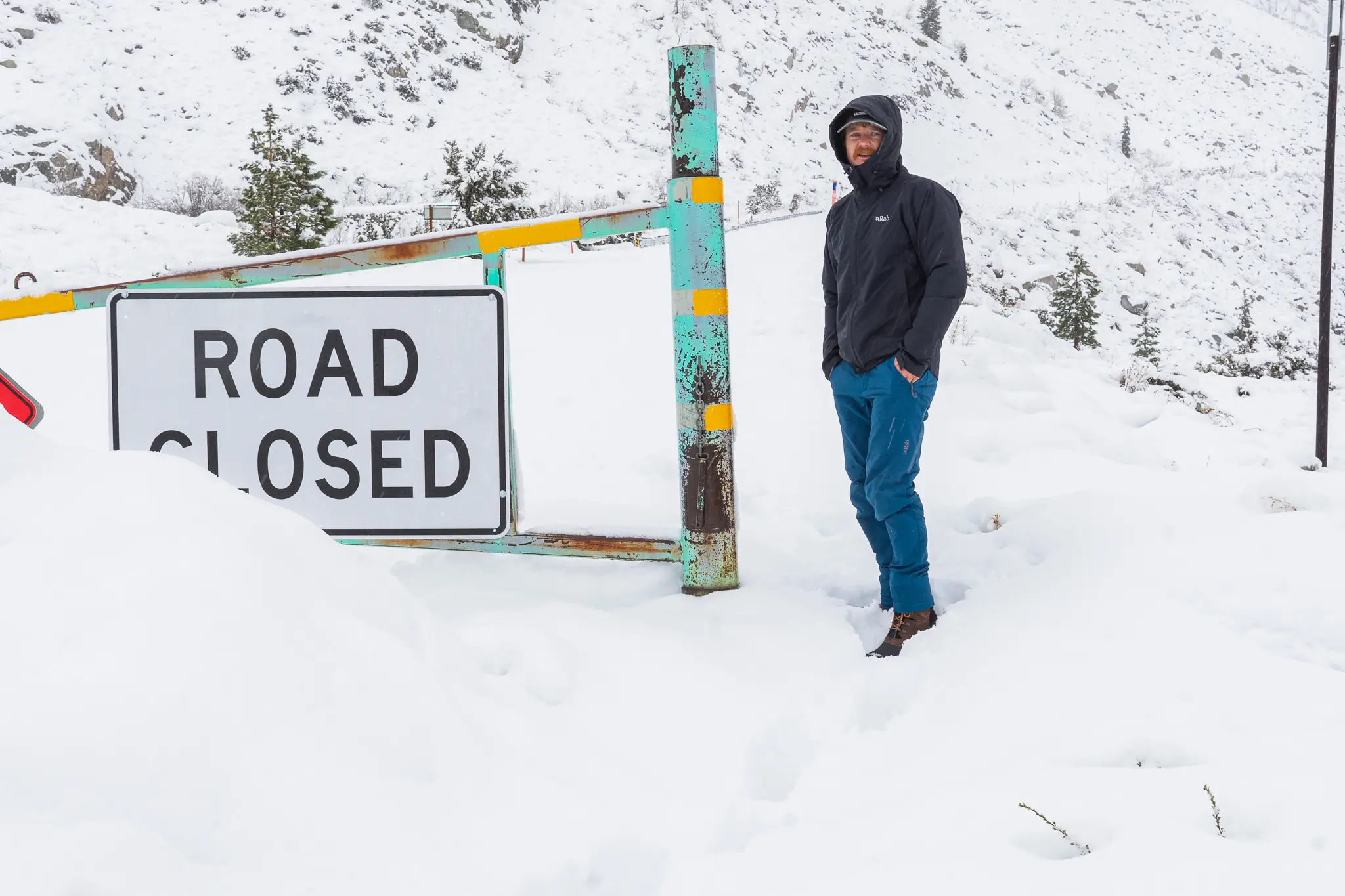
How We Tested the Best Men’s Winter Boots
Our winter boot testing at GearJunkie aims to strike a balance between real-world challenges and tailored bench testing to gain a comprehensive understanding of what these boots are capable of. Here’s how we rate these boots before recommending them:
- Field testing: Our primary testing is all the real deal, and we’re putting in the miles, both outdoors and in the city, during the winter months to test these boots. We aim to challenge them on the most important aspects, which include warmth, traction, and fit.
- Waterproof submersion testing: Every pair of winter boots we test undergoes our submersion test, where we challenge the waterproofing by immersing it in a tank of water until it leaks. We do the same test with a bank of snow and look for wetting out seams.
- Our winter boot rating system:
- Warmth: 25% weighted. Performance below 32 degrees F is the benchmark for a high rating here, with the highest rated boots staying warm at close to 0 degrees.
- Weather Protection: 25% weighted. Boots should be waterproof in a variety of conditions and throughout an entire day to rank highly.
- Comfort & Fit: 25% weighted. We look for ample padding and boots that aren’t too washy in the fit for when traction matters. We also consider the height of the shaft, as well as the extent to which the lacing system covers it.
- Traction: 25% weighted. Tested on frozen mud, snow, and ice.
Our Testing Locations
We test these winter boots in a variety of climates and conditions, ranging from the deep snow of the North Cascades to the biting cold of the Rockies. Last winter, we snowshoed into remote fire lookout towers, made the soggy commute to work, and shoveled a decent amount of snow. We aim to be specific in our testing by going the distance and using these boots as they were designed.
Our Expert Testers
GearJunkie’s Editorial Director Sean McCoy is no stranger to a snow-bound romp in the highlands, and regularly pursues big game in the alpine of Colorado where cold feet are simply not an option. McCoy spearheaded the testing of winter hunting boots for this guide and aimed to balance a test of grizzled durability with the need for undying off-trail traction when testing winter boots.
Contributor Austin Beck-Doss has a front-row seat to the brutality of a Wyoming winter from his station in Lander, where his transition from climbing season to snowboarding can be as short as a 48-hour storm cycle. Beck-Doss has been putting boots on the ground for this guide since 2022, and maintains a broad view over the category from slush-city cruisers to insulated après ski lot slippers.
Finally, Senior Editor Nick Belcaster may have a problem understanding the concept of a “shoulder season” and regularly sets out into the mountains of the North Cascades as the first snows of the season are blowing in. An accomplished backpacker, mountaineer, and splitboarder, Belcaster has also advised and outfitted thousands of mountaineering clients in appropriate cold-weather footwear in his time, and knows that cold toes won’t do when the summit is calling.
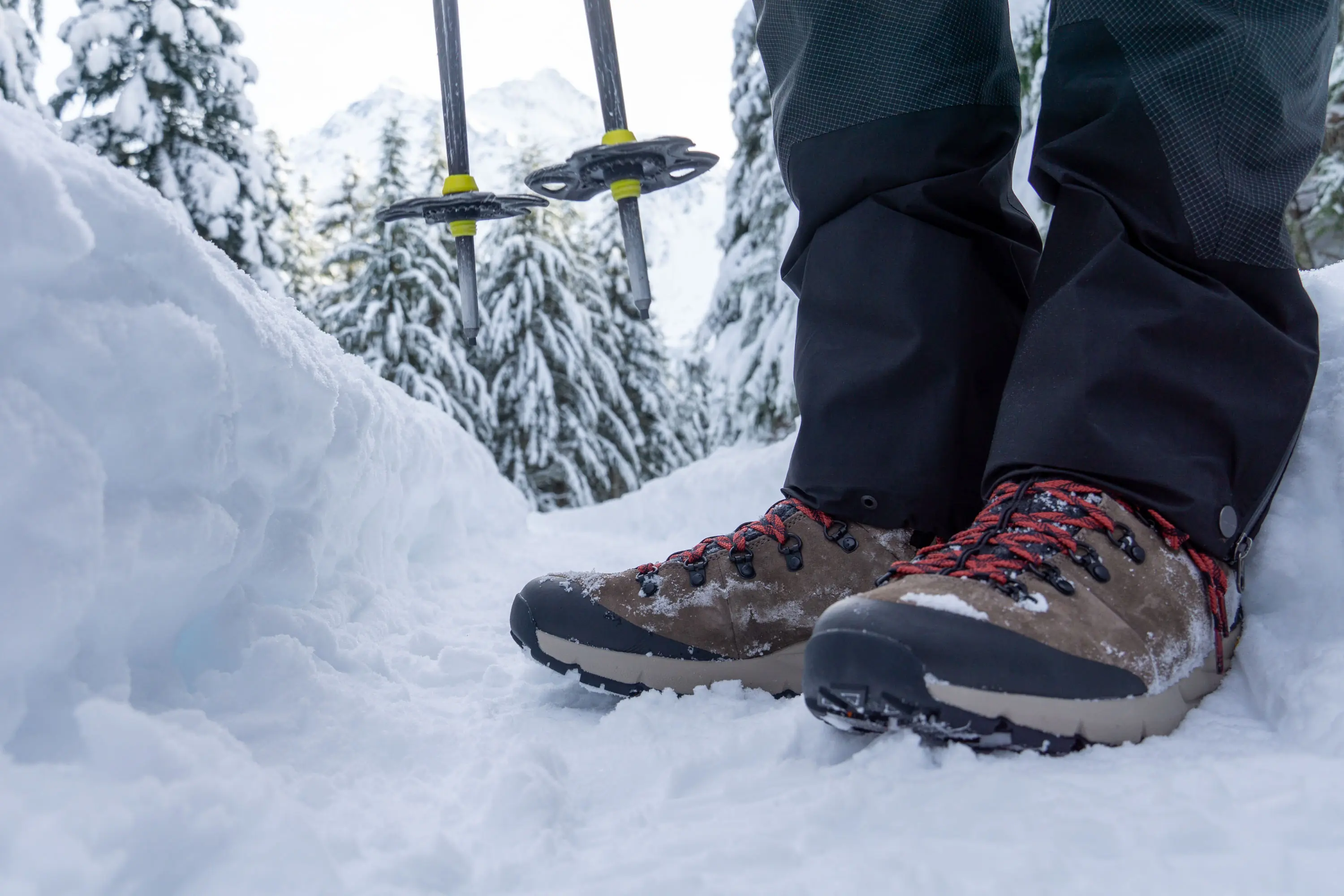



Buyer’s Guide: How to Choose the Best Winter Boots for Men
Winter boots come in all sorts of shapes and styles. As our list of recommendations demonstrates, the winter boot market contains everything from extreme weather work boots to stylish formal footwear. With so many options, it can feel daunting to sift through the pile and select the perfect pair.
When choosing the best boots for you, it’s important to understand some of the key factors that differentiate one pair from the next. In this comprehensive buyer’s guide, we thoroughly explain each of these factors to help you make a confident and informed choice.
For more winter footwear recommendations, check out our guides to the best women’s winter boots, the best winter hiking boots, and the best snowshoes.
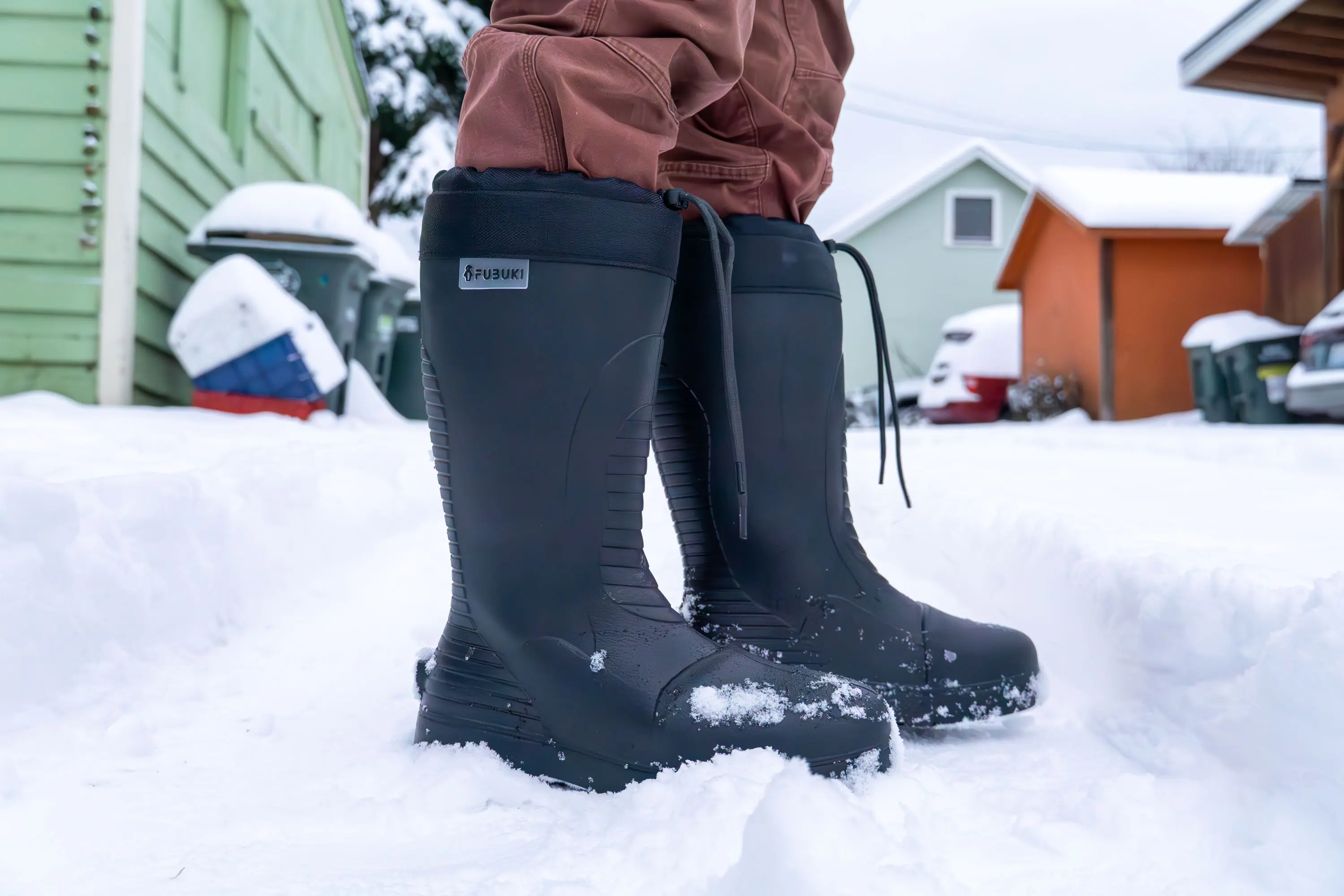



Temperature Ratings
Any winter footwear worth its weight will offer plentiful warmth. Many winter boots come with a specific temperature rating. While these ratings can be helpful guidelines, the actual feel of a pair of boots will always be a better indicator of warmth than a manufacturer’s rating.
Often, boots claim to have very impressive temperature ratings well below zero. Because there is no standardized test for boot temperature ratings, always take these numbers with a grain of salt. The warmth of a boot comes from various factors, including sock thickness, activity level, personal cold tolerance, and much more.
A winter boot rated to -10 degrees F will likely feel warmer than a boot rated at zero made by the same manufacturer. Using temperature ratings to compare boots from different manufacturers is a less reliable practice. We certainly recommend trying boots on to get a real impression of their warmth and comfort.
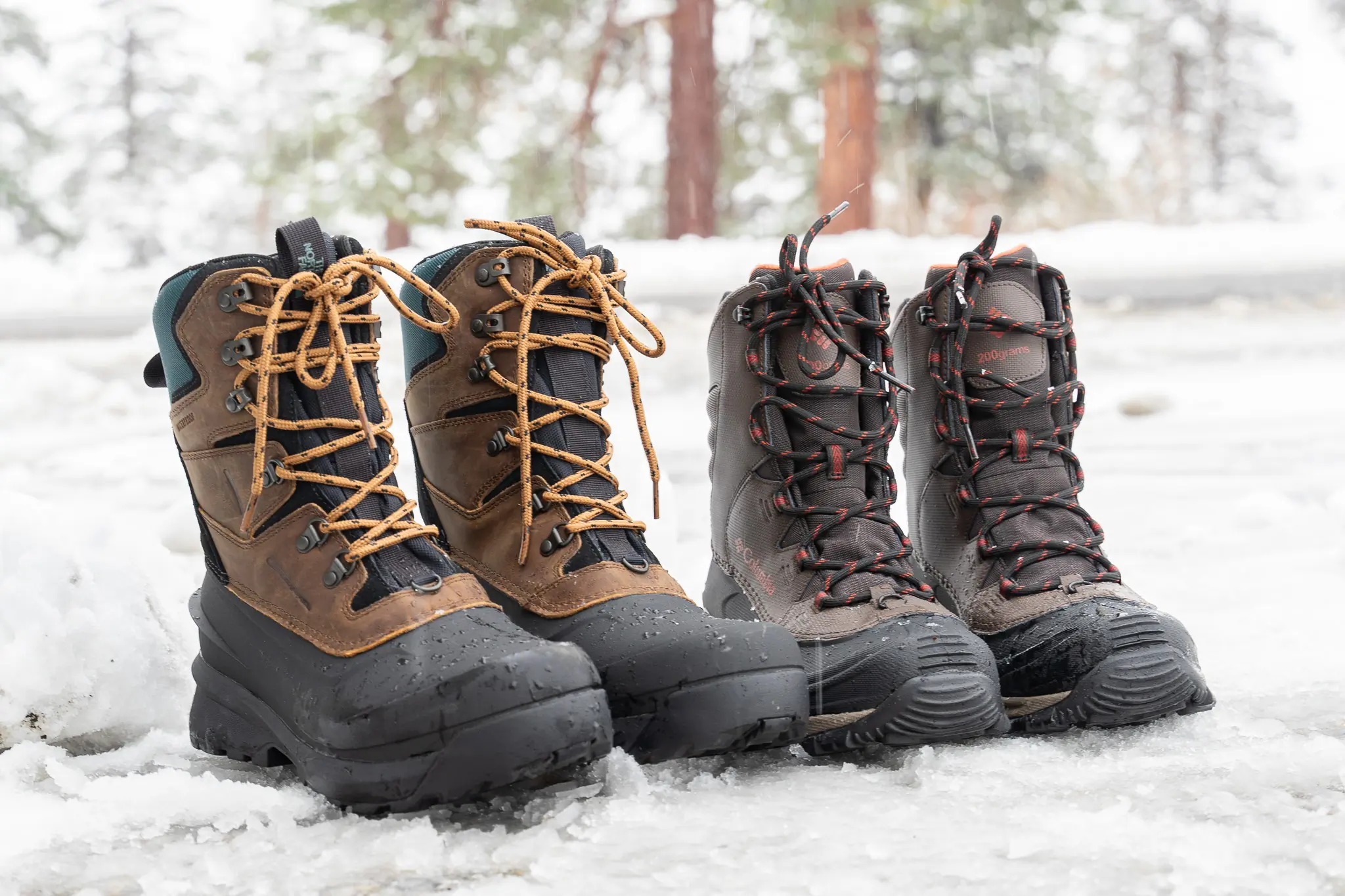



Insulation Type
Winter boots utilize a variety of different insulation types to achieve the desired combination of warmth and comfort. The most common types of insulation are synthetic, felt, and sheepskin.
Synthetic
Most modern winter boots are equipped with synthetic insulation. Between the outer shell and the inner lining of the boot, synthetic materials provide lightweight and durable warmth. Perhaps the most important benefit of synthetic material is that it can insulate even when wet.
Popular name-brand synthetic insulation options include Thinsulate and PrimaLoft, though many other quality options are available. No matter the name brand, the total weight of synthetic insulation will always be a better indicator of warmth than the name brand.
Many manufacturers include the insulation weight in their boot specifications. Lightweight to midweight boots will usually have a fill rating of 200-400 g. If you are seeking heavy-duty boots for extreme cold, look for a fill rating of at least 300 g.
Felt and Sheepskin
Felt and sheepskin are materials that have long been used to insulate winter footwear. While synthetic insulation is by far the current norm, some manufacturers opt for classic and traditional materials.
The downside of felt and sheepskin insulation is they tend to be heavy and bulky. Still, these materials can be warm and comfortable. Usually, felt and sheepskin is utilized in a boot’s lining where they can be in direct contact with the foot. While these materials provide warmth even when wet, they may become extra heavy when saturated and require lots of time to dry.
Weight
As you might expect, heavier boots are usually built for the worst conditions, while lightweight winter boots are better for moderate temperatures and less demanding uses. As the thickness of the outsoles and the fill rating of insulation increases, the overall weight goes up. Lightweight winter boots are great for active use, but they often sacrifice some stability, grip, and warmth.
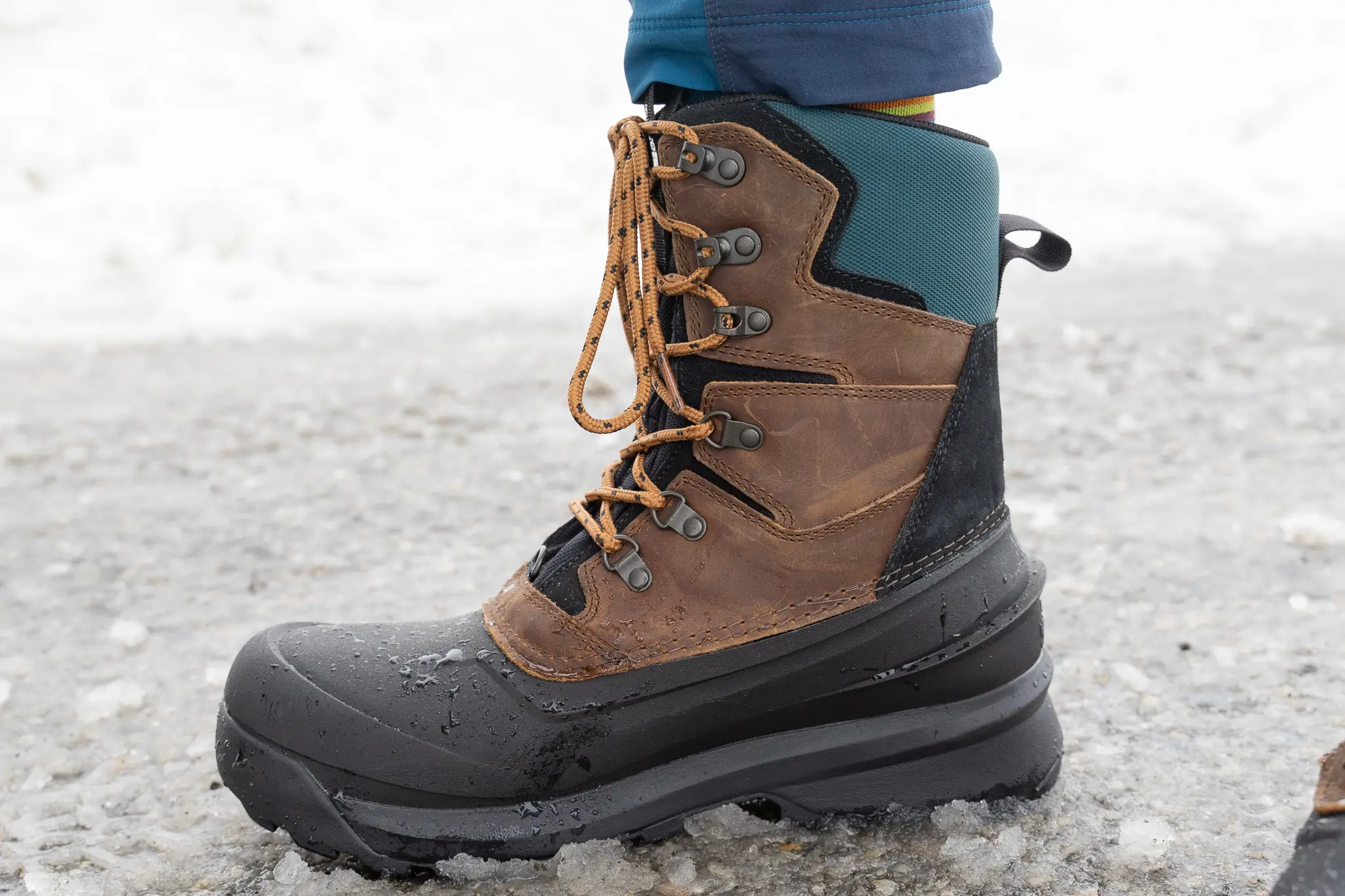



Boot Height
Almost all winter boots are ankle-high or higher. Boot height is a major factor that determines the intended function of the boot.
On the low end of the boot height spectrum are lightweight hiking-style boots such as the Danner Arctic 600 Side-Zip. Lower-cut boots typically measure around 7 inches from the footbed to the top of the boot. Lower-cut boots are ideal for hiking, as they tend to be relatively light and flexible.
The downside of lower-cut boots is they allow snow to seep in, especially when post-holing through a deep snowpack. If you find yourself in bottomless snow with a pair of ankle-high boots, a pair of gaiters may offer a simple solution.
If you plan to use your boots in regions with lots of snow accumulation, you’ll probably want to pick boots at least 8 inches tall. Work boots and boots for extreme weather are designed to sit higher on the leg, keeping the elements out and the warmth in. On this list, the Baffin Control Max is a high-cut and extremely warm boot ideal for the coldest, snowiest conditions.
Waterproofing
Nothing beats a reliable pair of boots that keep your feet warm and dry no matter how bad the weather gets. Waterproofing is the difference between blissful comfort and soggy misery.
Waterproofing is ultimately a product of the materials incorporated into a boot’s design. Features such as rubber outer layers and an exterior water-resistant treatment are standards of the most waterproof boots.
All of the boots we’ve selected are designed to keep water out as much as possible. Some of the more robust included models feature a two-piece system that includes an outer waterproof barrier and an inner removable liner. On this list, the Kamik Nation Plus is a great and affordable two-piece boot that successfully keeps moisture out.
One-piece boots typically feature a waterproof membrane sandwiched in between the outer material and the lining. While one-piece boots usually don’t have the failproof waterproofing of many two-piece styles, they tend to be lighter and more flexible.
On this list, the Fubuki Niseko 2.0 is a burly all-EVA boot with a full-foot-tall shaft that refuses to let water in.
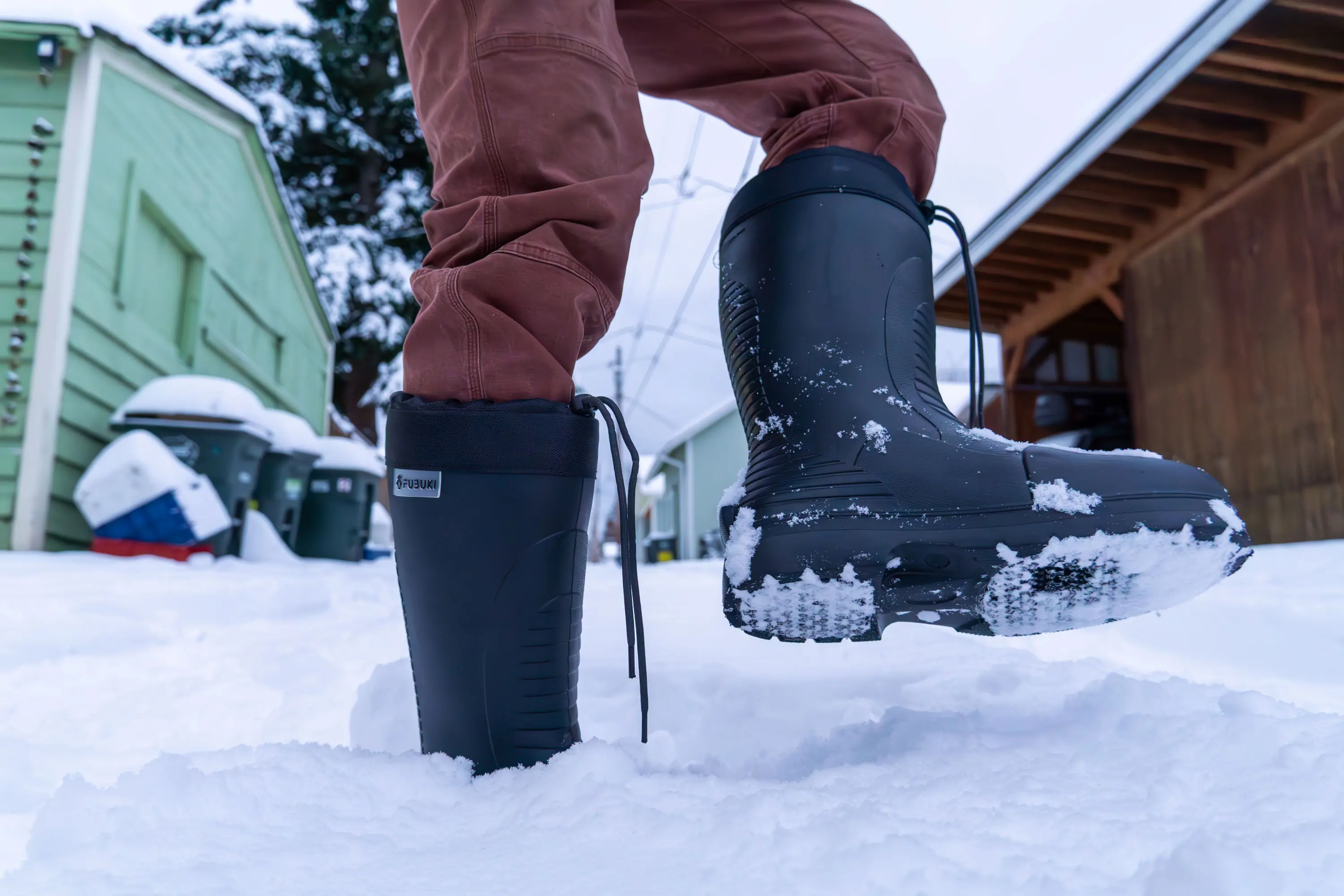



Breathability
The downside of built-in insulation and waterproof membranes is decreased breathability. While boots that trap heat are certainly desirable, overheating can be a real concern, even in extremely cold weather. For this reason, a reasonable degree of breathability is an asset in winter boots.
Generally, lightweight hiking-style winter boots are more breathable than gravy-duty work boots or two-piece models that thrive in extreme cold. While hiking or performing other strenuous activities, breathability can help to prevent sweating and blisters.
Ultimately, breathability is a trade-off. Winter boots simply cannot be completely waterproof and extreme weather-ready and fully breathable at the same time.
If you’re simply looking for top-notch warmth or waterproofing, breathability doesn’t need to be a major consideration when selecting boots. If you plan to wear your boots for active use in a wide range of conditions, be sure to select a breathable pair.
Outer Material
A winter boot’s exterior material will significantly affect its waterproofing, breathability, and weight. Rubber and leather are the most common outer materials.
Rubber
The waterproof qualities of rubber boots are unbeatable. For decades, brands such as Muck Boot and XTRATUF have been well-regarded for their nearly impenetrable rubber boots. In constantly wet and rainy regions such as the Pacific Northwest, rubber boots are a rightfully popular choice.
The downside of rubber as an outer material is its lack of breathability. In the same way that rubber boots successfully keep moisture out, they also keep moisture in. For long hikes and active use, rubber is not the ideal outer material.
Leather
Leather boots have been a popular winter footwear choice for hundreds of years. While leather does not provide the impenetrable qualities of rubber, it is a supple, durable, and relatively water-resistant material.
Compared to rubber boots, leather models tend to breathe slightly better. If you plan to wear your boots in a wide range of weather conditions, leather boots are an excellent and versatile choice.
Outsoles and Grip


The outsole is the part of a boot that makes direct contact with the ground underneath. Good grip is essential to a winter boot’s value and performance.
True winter boots come with outsoles designed to provide a reliable grip in cold and snowy conditions. To account for subfreezing temps, many winter boot outsoles feature soft rubber compounds that don’t overly harden in the cold. Additionally, thoughtfully designed tread patterns can prevent snow and mud from building up.
Outsole compounds and tread patterns vary wildly across the winter boot market. Generally, models geared toward hiking will have a deep tread and superior grip. Work boots typically come with heavy, bulky outsoles that prioritize durability above grip.
In severe conditions, you may want more winter traction than your boots can offer on their own. No matter how deep and sticky your tread is, chances are it won’t help on solid sheets of ice.
Traction devices such as Yaktrax and MICROspikes can be fixed onto the bottom of winter boots for improved grip on ice and hardpack. These devices have metal components designed to dig into ice and improve traction — just like tire chains on a car.
Fit and Sizing
Properly sizing winter boots can be a tricky process. Unlike with most footwear, you’ll likely wear extra thick socks with your winter boots, and it’s important to consider this when picking a size.
Ideally, your winter boots will be comfortable and free of major air pockets and hot spots. Of course, the best fit for you depends on the type of activity you’re using the boots for.
If you’ll be hiking or working on your feet, we recommend a snug fit for maximum performance. If you plan to use your boots for hanging out casually or simply wearing them about town, a looser, comfort-first fit is the way to go.
As always, there’s no substitute for trying on shoes, and we highly recommend you do so if possible.
Price & Value
Budget
Winter boots typically start out at a bottom dollar of $100, and for the budget price, there’ll be some concessions made to hit the price point. This is the realm of casual winter boots, which typically are less insulated, and likely to use suede leather or synthetics in their uppers.
The outsoles are also often molded together with the boot lowers, which is a cheaper manufacturing process but not as durable. For the money, the Kamik Nation Plus ($100) will keep you warm and dry in deep snow, but it isn’t our favorite hiker. If you’re looking to cover more ground, the Columbia Bugaboot III ($120) is lighter and has a much better profile for snow hiking.
Mid-Tier
Mid-range boots typically range from $150 to $250, and this is where most winter hiking and snow boots fall. These boots will often spring for a more top or full-grained leather and may incorporate a proprietary waterproof lining into the build. Vibram soles also make an appearance here, which can greatly enhance the traction on hard-packed snow or ice.
Our favorite boots (The North Face Chilkat V) are pretty affordable at $159. They’re insulated, decent hikers that are waterproof almost up to mid-calf. They also have gator attachment points and pair well with snowshoes.
Premium
Anything north of $250 and you’ll get a pair of boots geared toward maximum warmth and durability, with temperature ratings that may be overkill for a lot of us in the lower 48. The Danner Arctic 600 Side-Zip ($250) and Danner Recurve 400G ($260) are two premium boots that give a lot for a moderate amount of money.
The Blundstone All Terrain Thermal Boots ($275) are some of the more expensive boots we tested, and while they’re warm and very comfortable, you pay top dollar for those sheepskin liners and the name.
Frequently Asked Questions
What makes a boot winter-worthy is weather protection. Insulation and waterproofness keep the feet warm and dry. So consider waterproofness a requirement, not a nice-to-have.
Ask yourself if you’ll frequently be in rainy, or wet conditions or if slushy snow is a common occurrence. If so, prioritize waterproofness. Just be aware that it often comes at the cost of breathability and excessive heat retention.
These days, shoe sole technology is a science all its own and can truly make or break the shoe. If you find yourself walking and hiking in icy conditions, pay special attention to the tread grip and look for one designed for ice.
Vibram makes an arctic-grip lug that has a tackiness on slick, icy surfaces. It’s not as grippy as microspikes, but it adds extra confidence when walking on ice.
Many boots have replaced the liner with insulation directly in the boot. The benefit of the liner is you can remove it and set it out to dry between uses. The downside is that liners can sometimes cause extra movement and friction, which can lead to blisters and discomfort.
The main considerations with height are ankle articulation, keeping snow out, and comfort. If you regularly get out in deep snow and want a lot of support, choose a taller boot.
Be aware that taller boots can have different diameters. If you have larger calf muscles, you may need to try a few pairs on to see if they fit your legs.
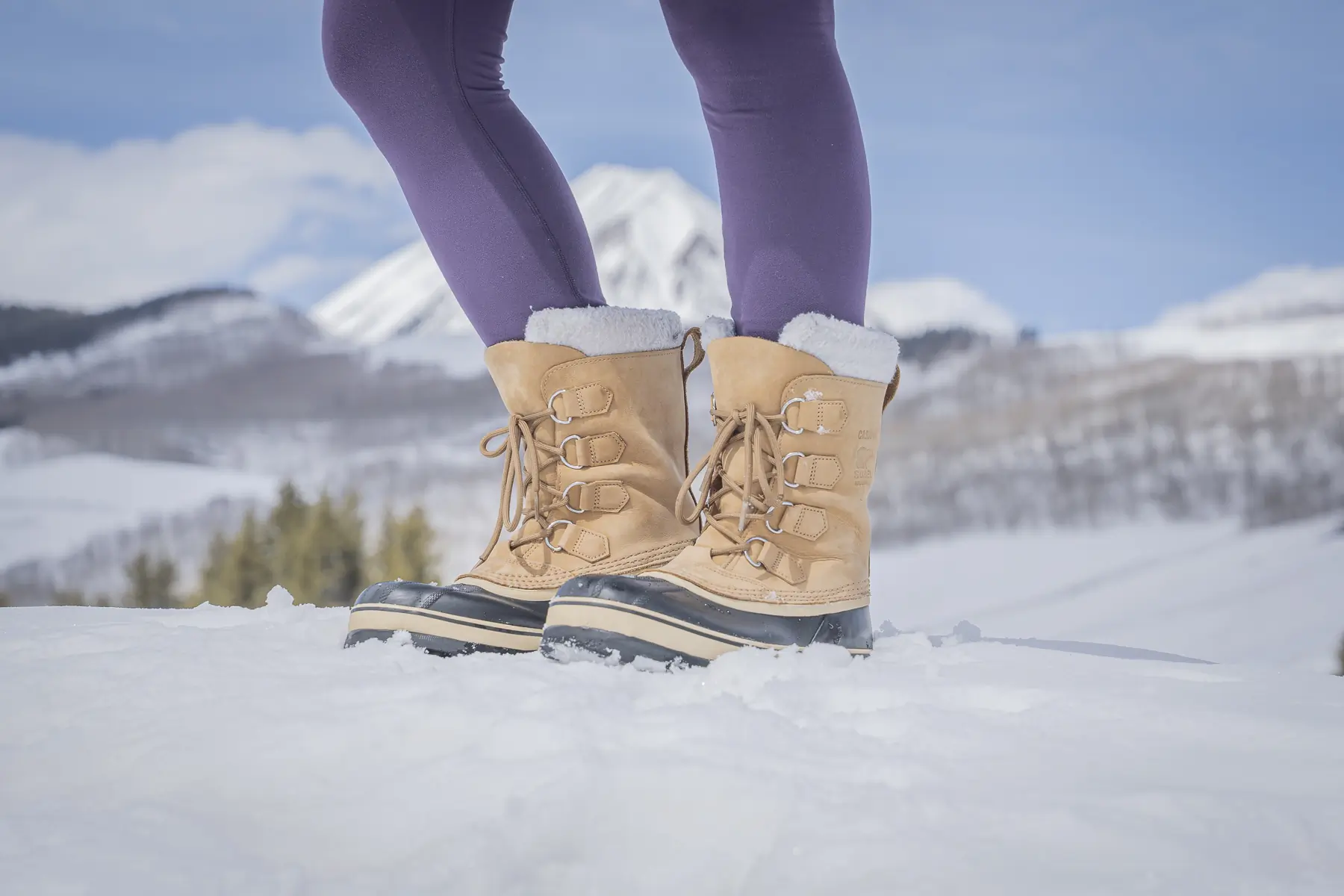

The Best Winter Boots for Women of 2025-2026
We tested the best winter boots for women in cold, snowy, icy, and sloppy conditions. Our top picks include Sorel, Timberland, and more.
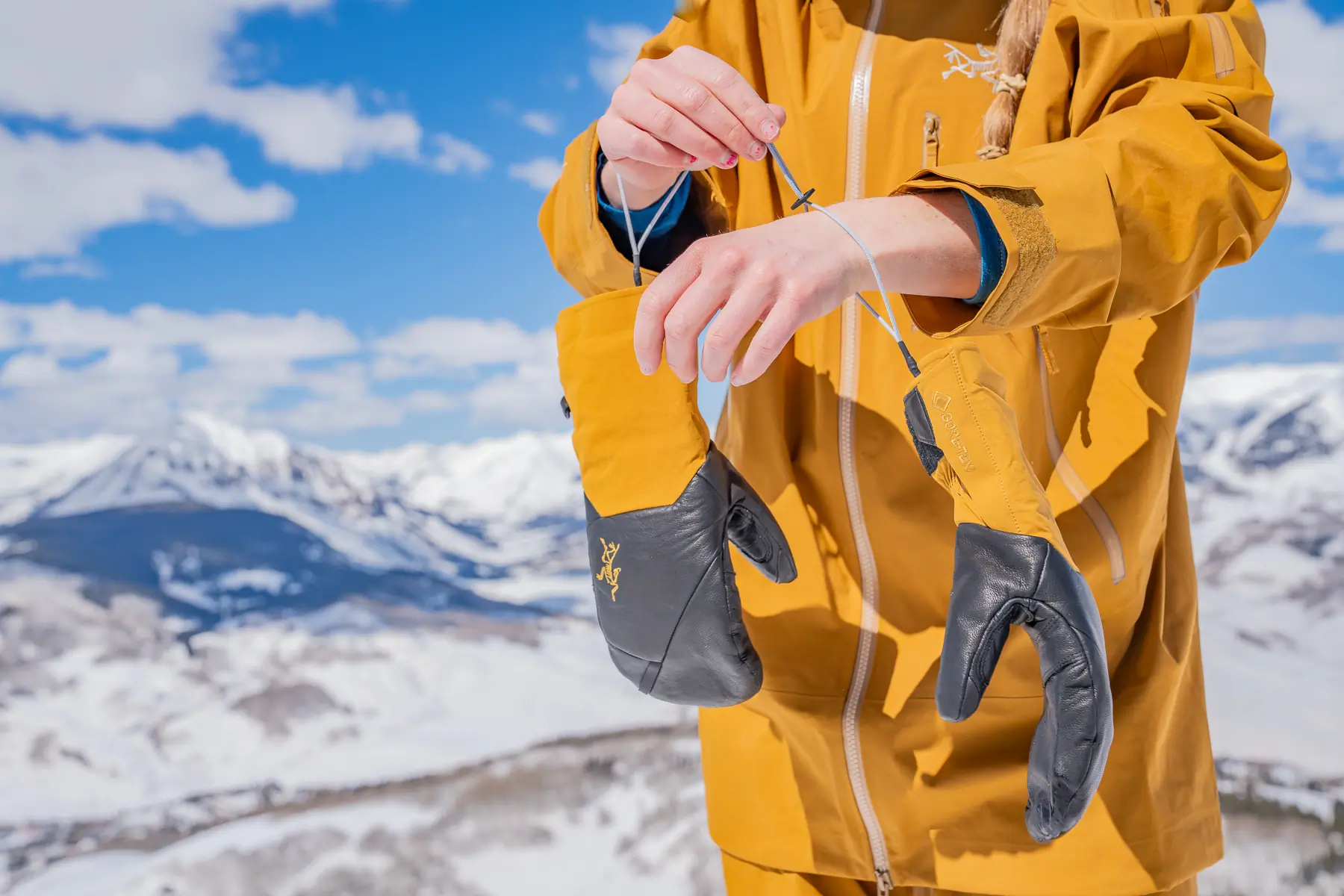

The Best Winter Mittens of 2025-2026
When it’s freezing out and too cold for five-finger gloves, pull on our favorite winter mittens from The North Face, Outdoor Research, Burton, and more.
